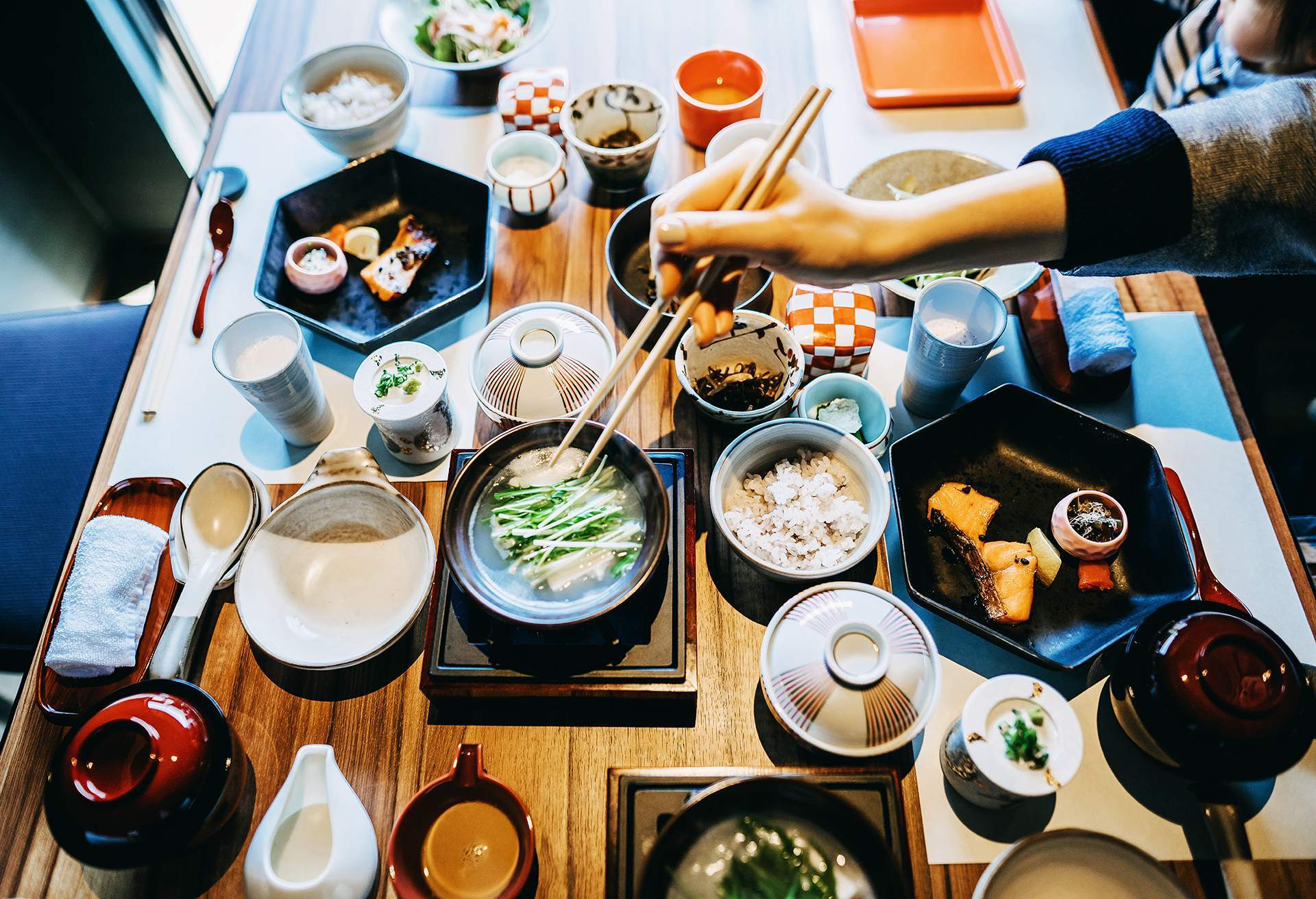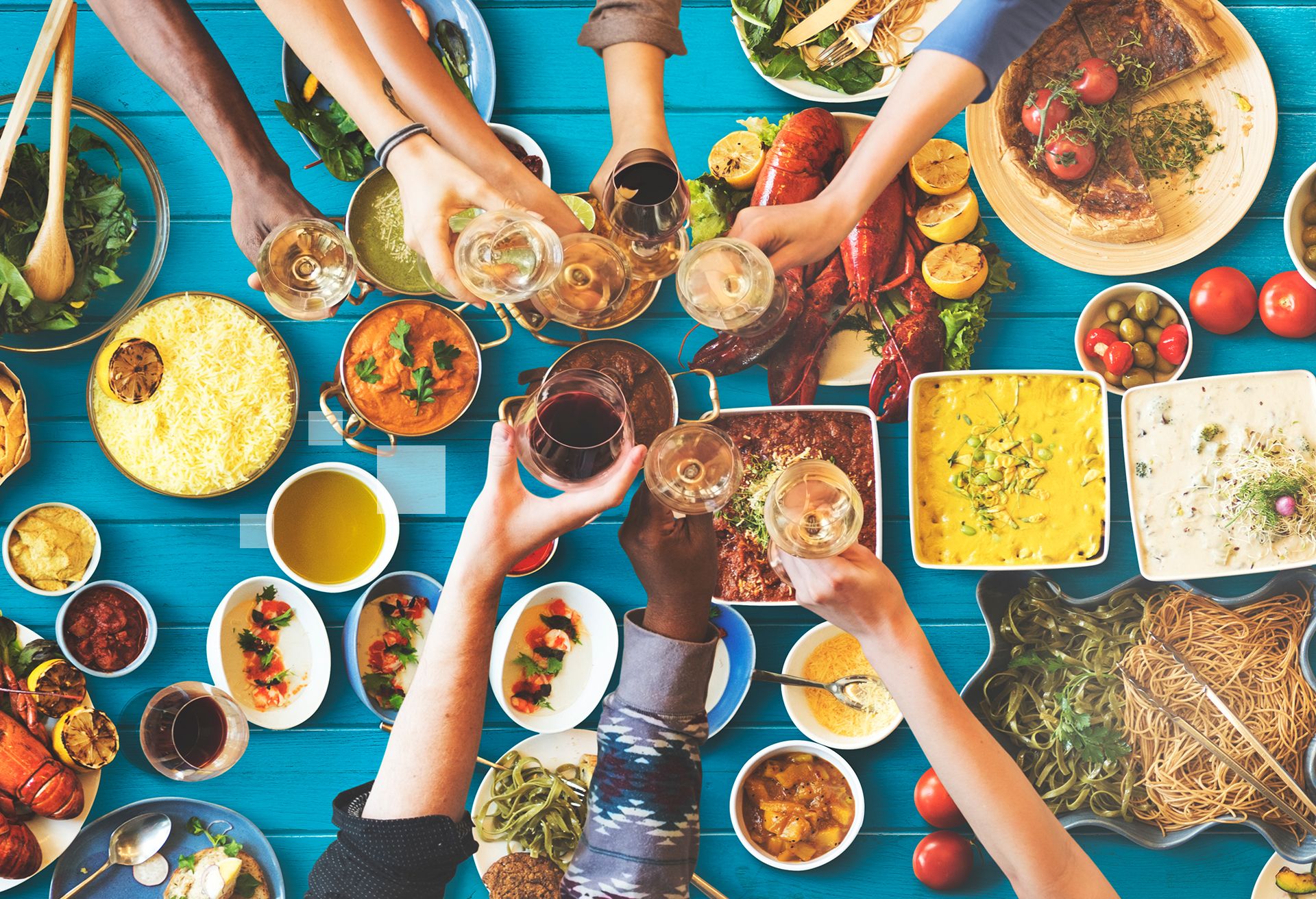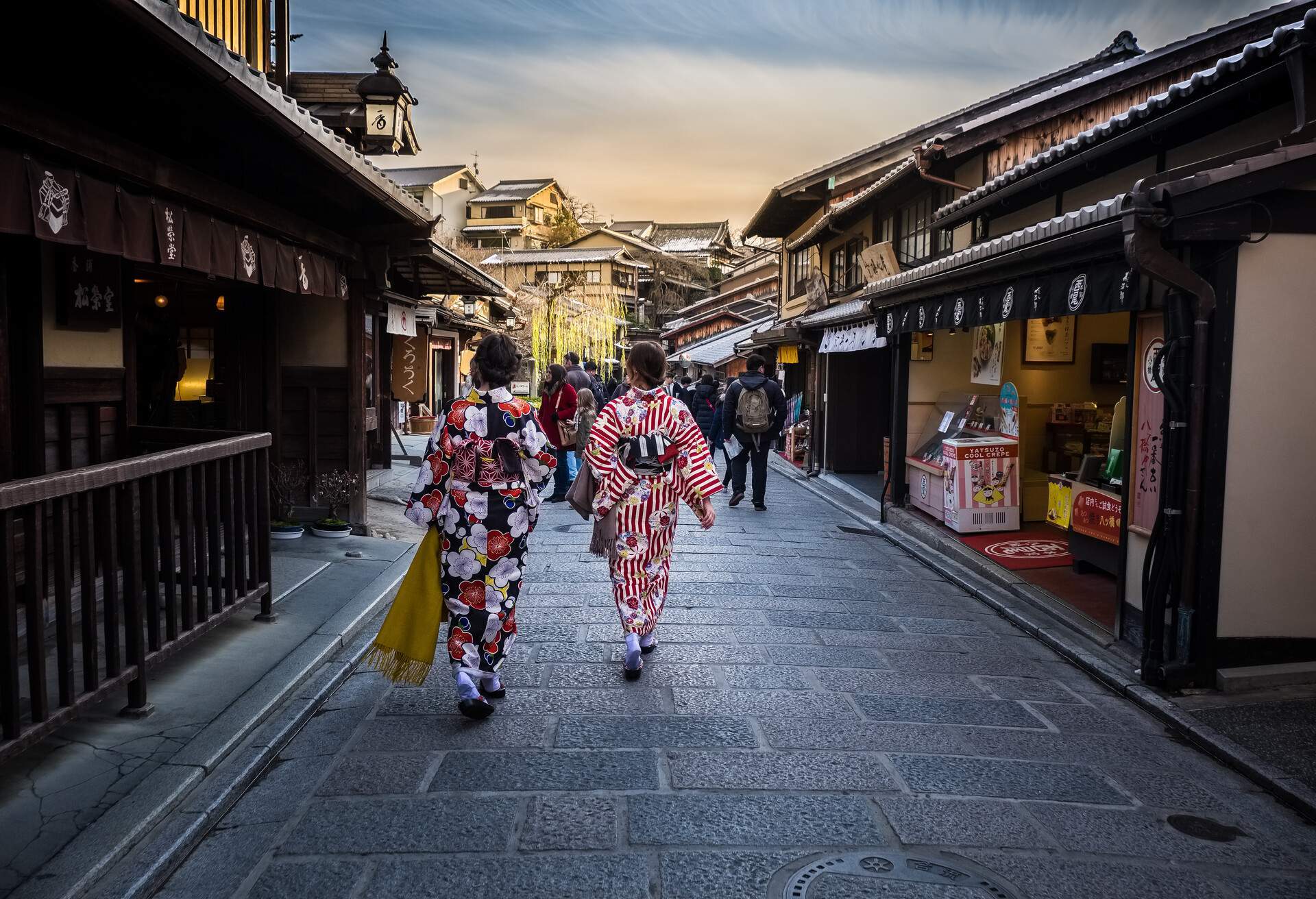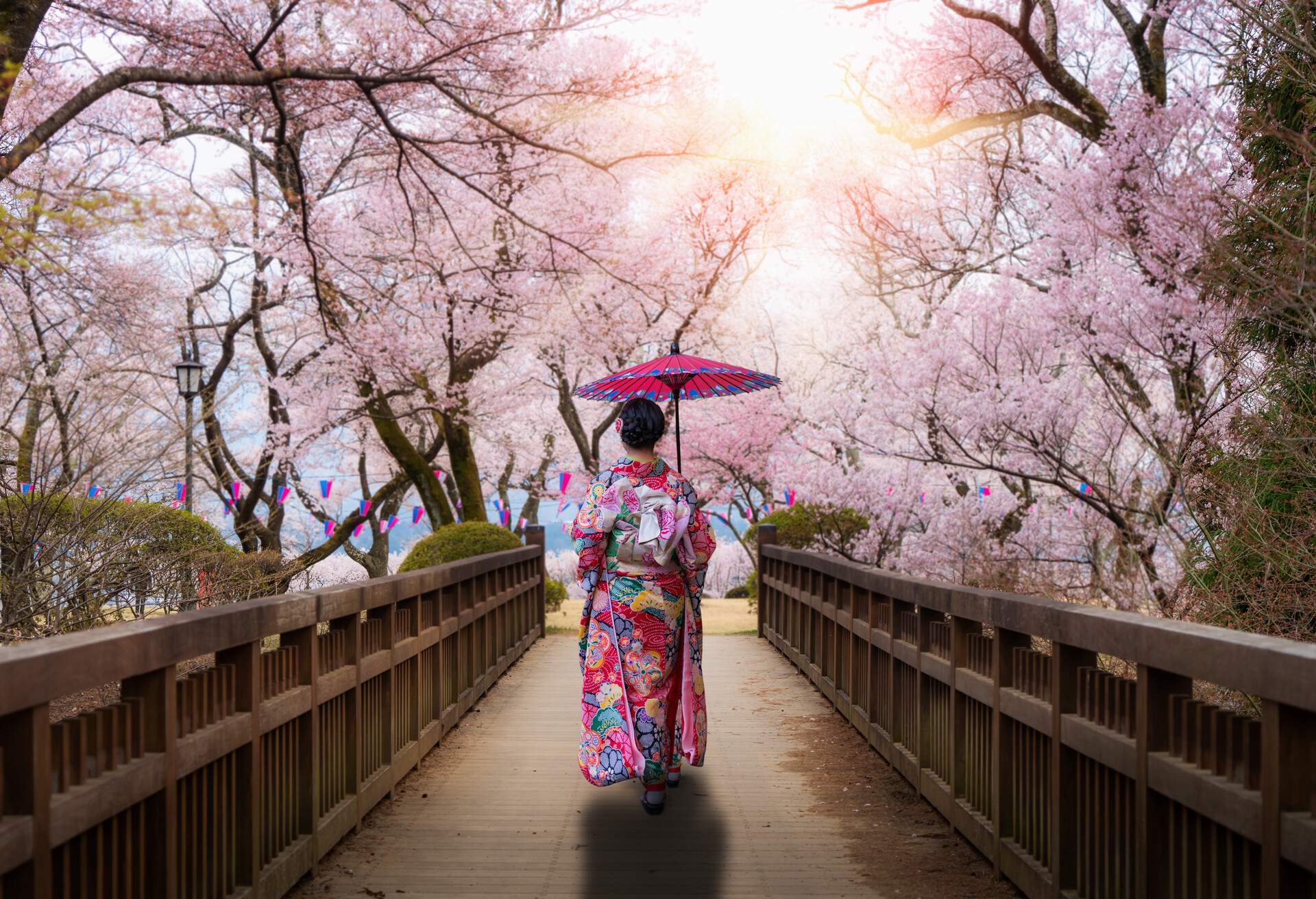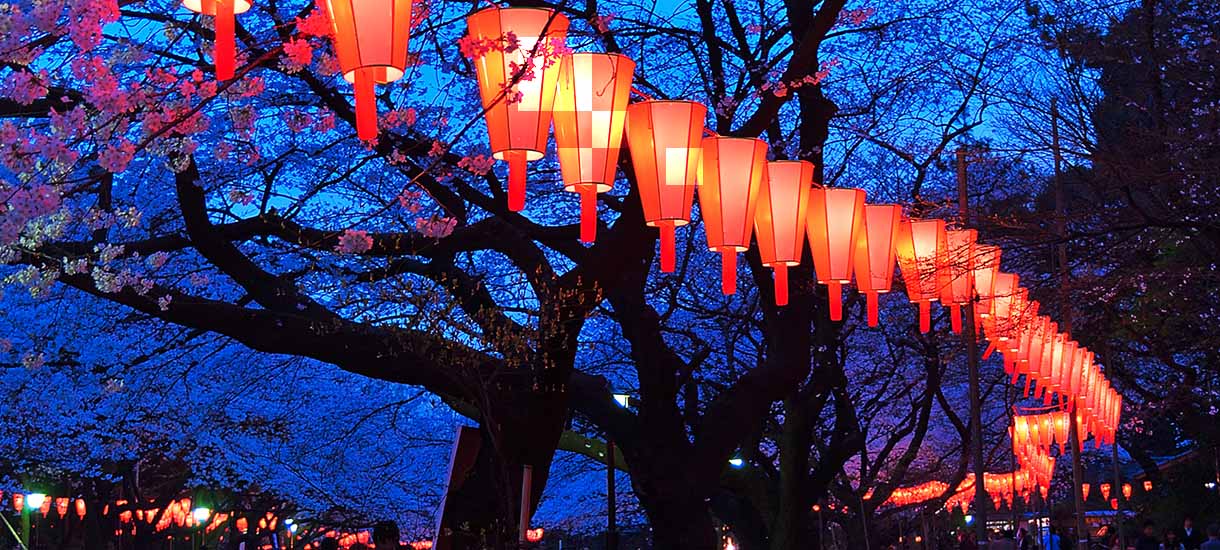Want a gastronomy experience with a difference? With cuisine and culture often intertwined, you’ll get to sample the very best food in Japan.
Whether it’s meals that originated thousands of years ago or more recent dishes from this century, go on a journey through history in this incredible country – one bite at a time.
Food in Japan: Seafood
Being an island nation, Japan is known for its seafood dishes. If you’re a fish lover, make sure you put the following dishes on your bucket list:
Sushi
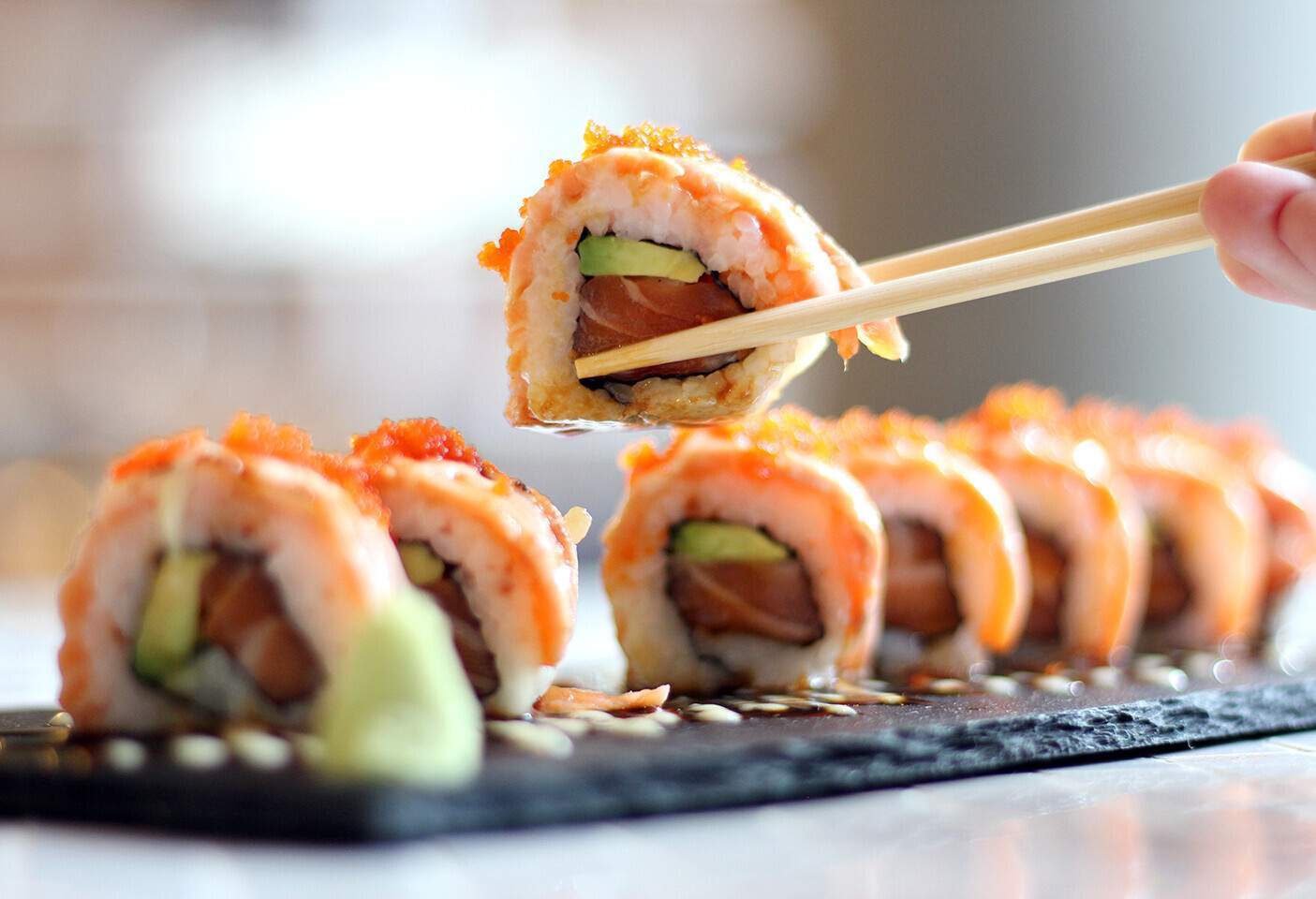
One of the Japanese dishes that make a trip to Japan complete is sushi. A dish that goes hand in hand with the culture of the country, you’ll find it served throughout the nation’s restaurants. One of the first Japanese delicacies that were exported overseas in the 19th century, it’s become part and parcel of fast food throughout the world.
The word ‘sushi’ means any dish made with Japanese rice that’s been seasoned with rice vinegar. While it can come in a range of forms, the most iconic varieties include seafood, which is known as nigiri sushi. Other popular versions include makizushi and inarizushi. Sushi is now a dish that can be associated with fancy restaurants but it had humble street-food origins, making it a classic dish that you won’t want to miss.
Sashimi
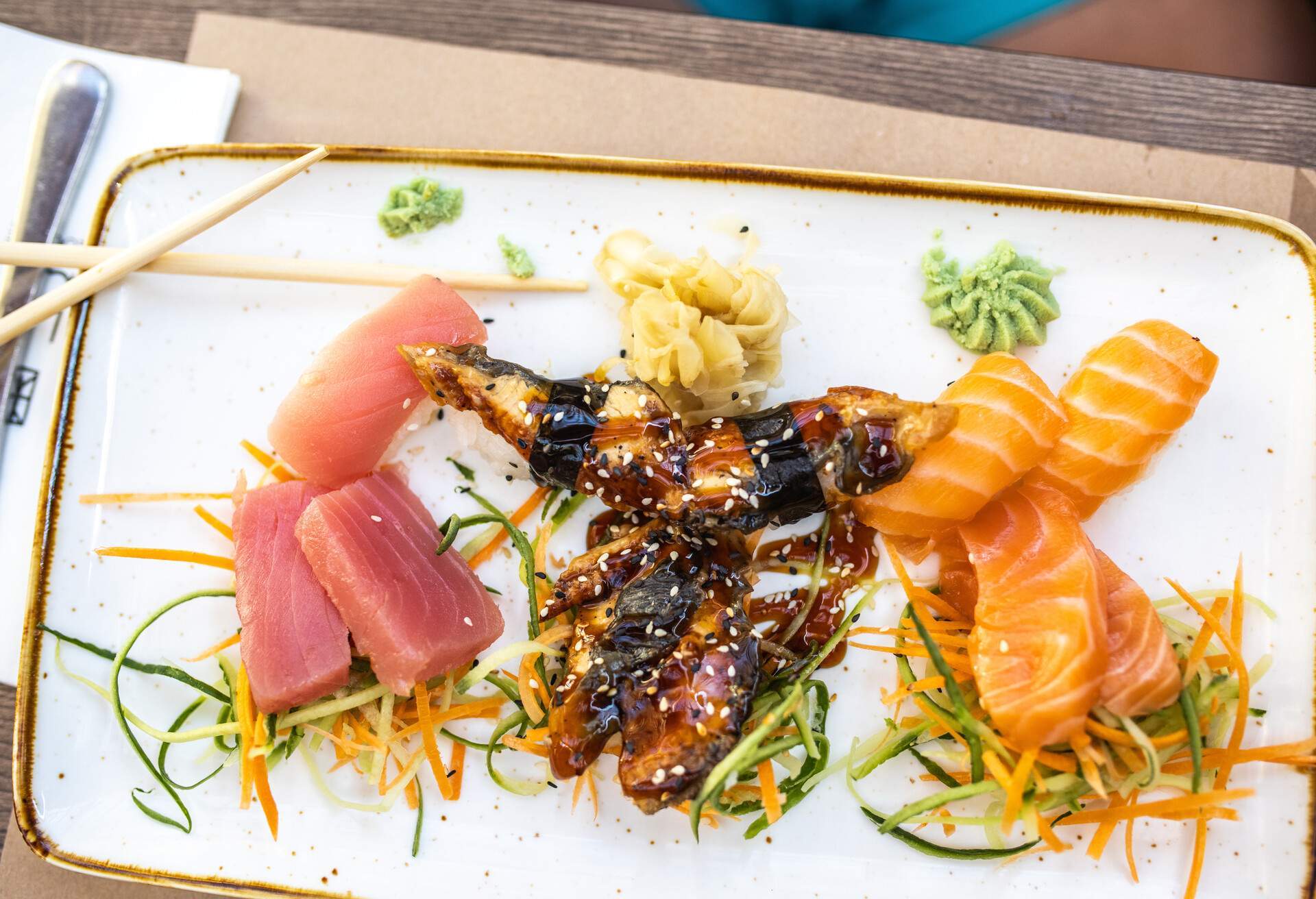
Sashimi is a Japanese food that splits opinions among visitors to the country. A controversial dish that exclusively uses raw fish or meat, it’s often served with daikon radish, wasabi, soy sauce and ginger. With the raw fish (or meat) having been expertly sliced into thin layers, it can be a bit of a culture shock to those who aren’t used to eating uncooked fish. However, for locals, it has been a mainstay of their diet for centuries.
Having initially started eating raw fish due to the health benefits, as raw fish provides a healthy dose of omega-3 fatty acids, it’s remained a popular part of the country’s cuisine. Seafood in general is a staple food of Japan due to the nation’s geography, being an island that has both freshwater and ocean fishing in abundance. With Buddhist and Shinto religions also being prevalent in the country, both of which discourage eating meat, fish was a natural replacement as one of the main sources of protein.
Mentaiko
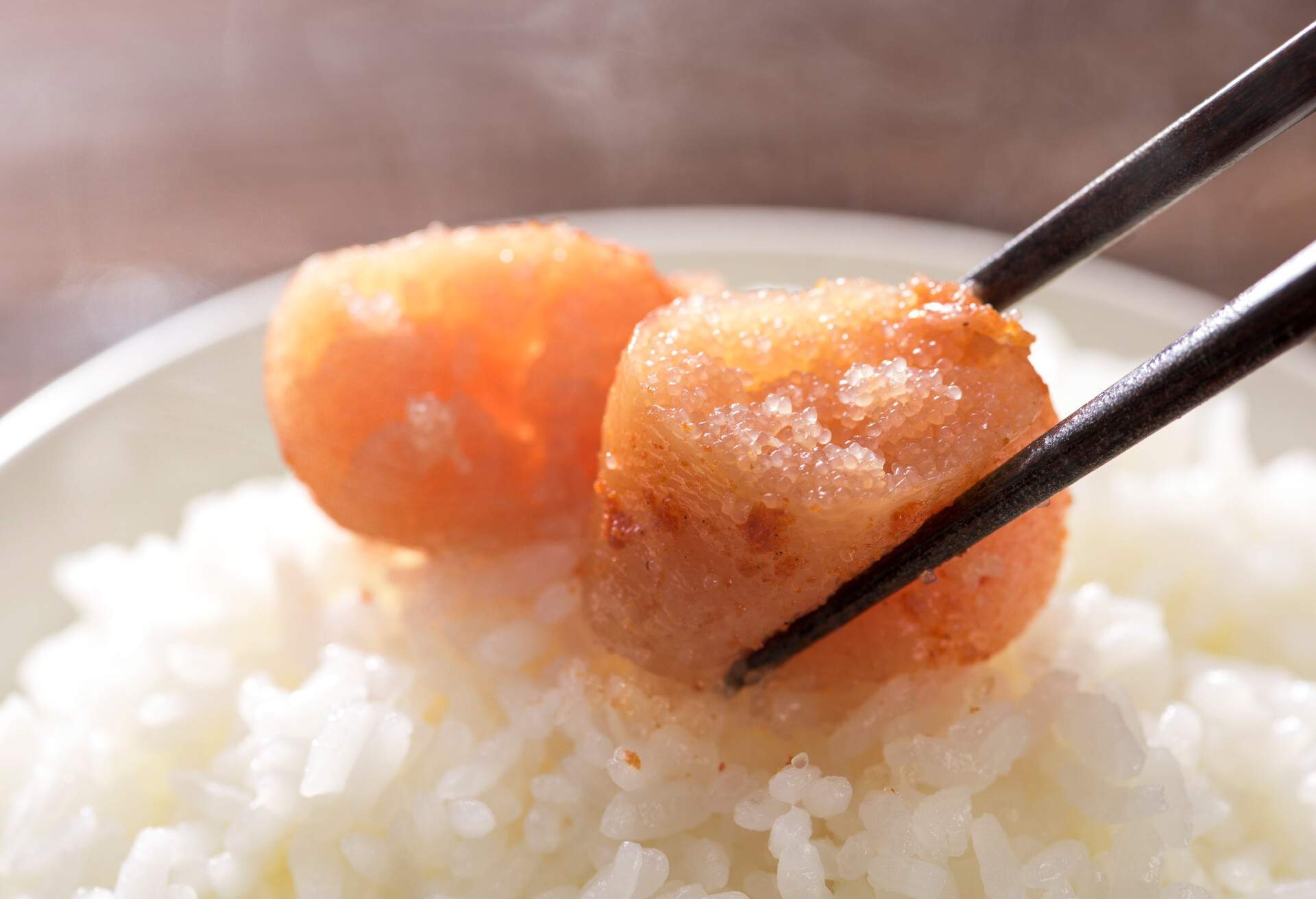
If you’re after a salty fish, then mentaiko is often considered the best Japanese food. This salty delicacy is made using pollock or cod fish eggs that are marinated in salty and savory seasoning. Spice lovers can also opt for karashi mentaiko, which is marinated in a spicy sauce. This dish is traditionally consumed as a side dish, as a topping for ramen or as an onigiri rice ball filling.
Over the years, the use of this fish dish has evolved, with many chefs now mixing it with butter or cream to make a mentaiko pasta sauce. The origins of this cuisine are from Kyushu, which is the third largest of Japan’s islands. So, if you want to taste it at its best, this is a great place to visit.
Unagi
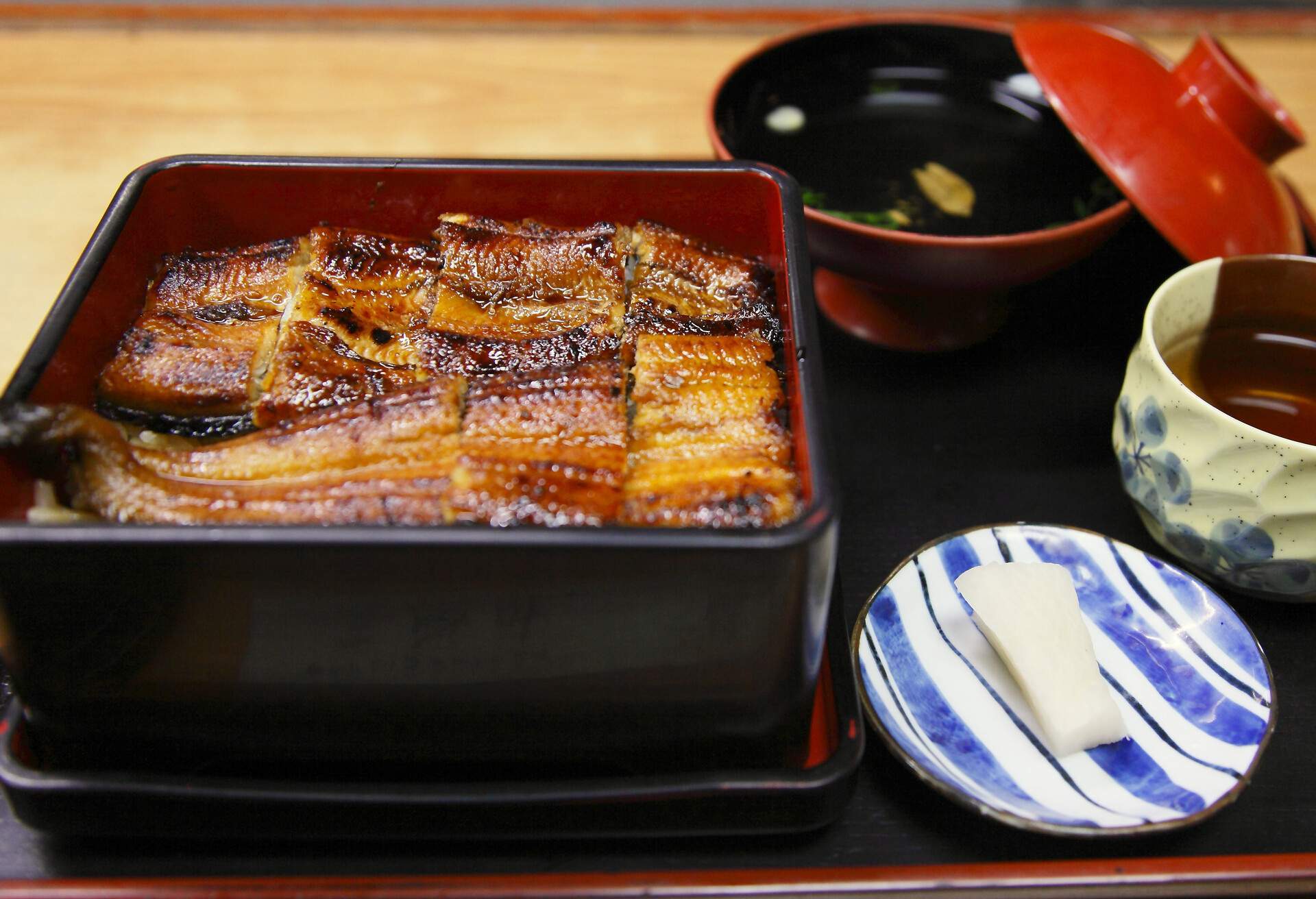
Another popular food in Japan is unagi, which is a river eel grilled on charcoal and coated with sweet barbecue sauce. Folklore suggests that unagi is the perfect antidote to the heat and humidity of the often sweltering Japanese summers, so it’s worth giving it a go if you’re visiting during the warmer months.
There are many restaurants in Japan that specialize in eel, which is a great way to enjoy a delicacy that is evocative of years gone by. Dating back to the Edo period (1603-1867), this dish is steeped in history. A good time to try this cuisine is between May and October, with fresh and wild unagi being caught during this period.
The method of cooking this fish can also be used on other seafood. So, if you’re not quite ready to try eel, you can also enjoy this cuisine with catfish, for example.
Food in Japan: One-pot dishes
Homely, comforting meals don’t get much better than one-pots. Using a range of the finest and freshest ingredients, this is one type of meal you must try when in Japan.
Sukiyaki
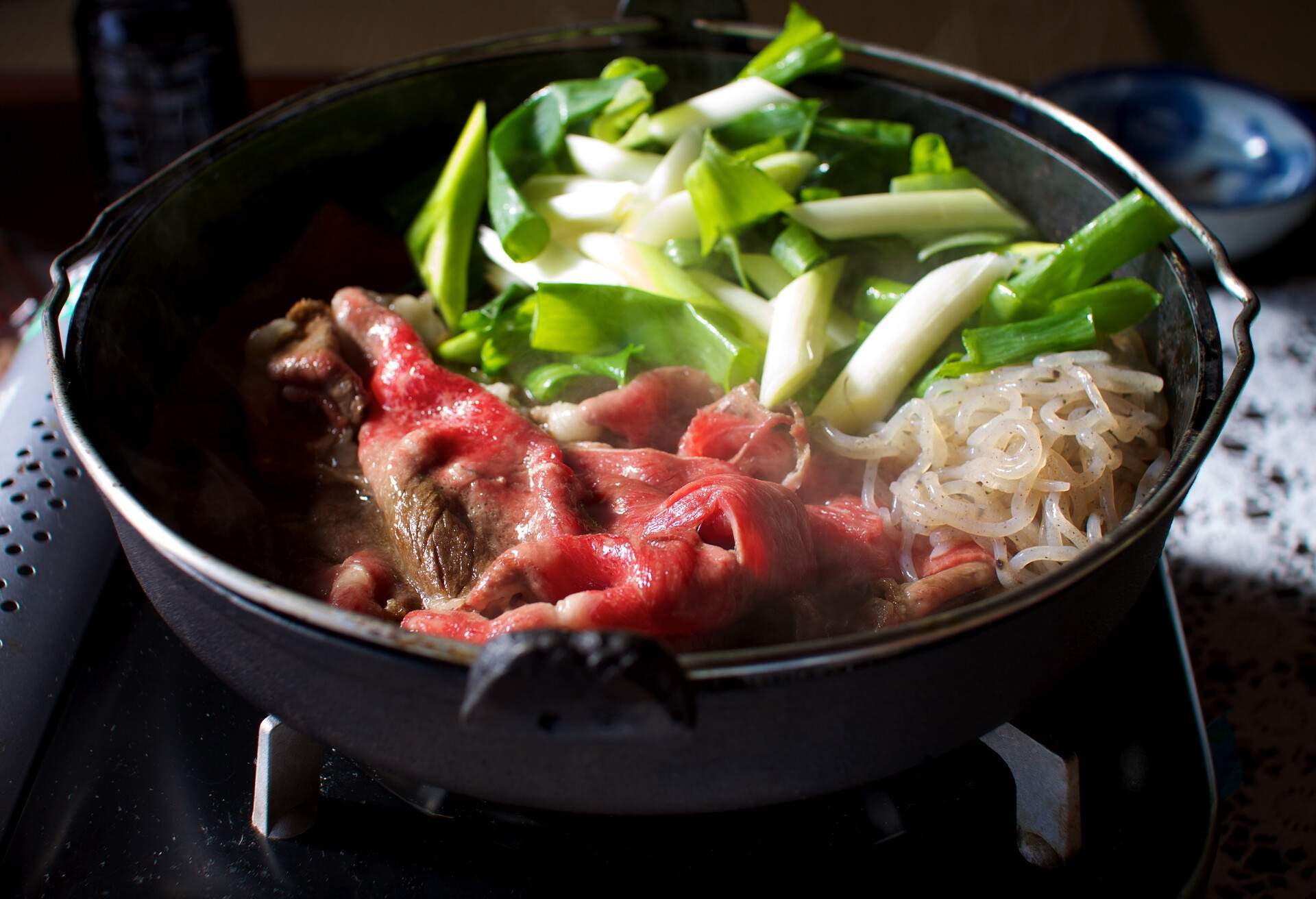
Often enjoyed in the winter months to warm your insides, this meal consists of seared beef, sukiyaki broth and a range of vegetables, proteins and noodles. The word sukiyaki means ‘cook what you want’, so don’t be surprised to see it coming in a range of forms.
The dish has deep-rooted origins in the country, which date back to the Meiji era (1868-1912), when Japanese farmers used to cook the dish using a variety of ingredients. You’ll find this dish throughout the nation, with it being one of the most popular cuisines in the country.
Oden
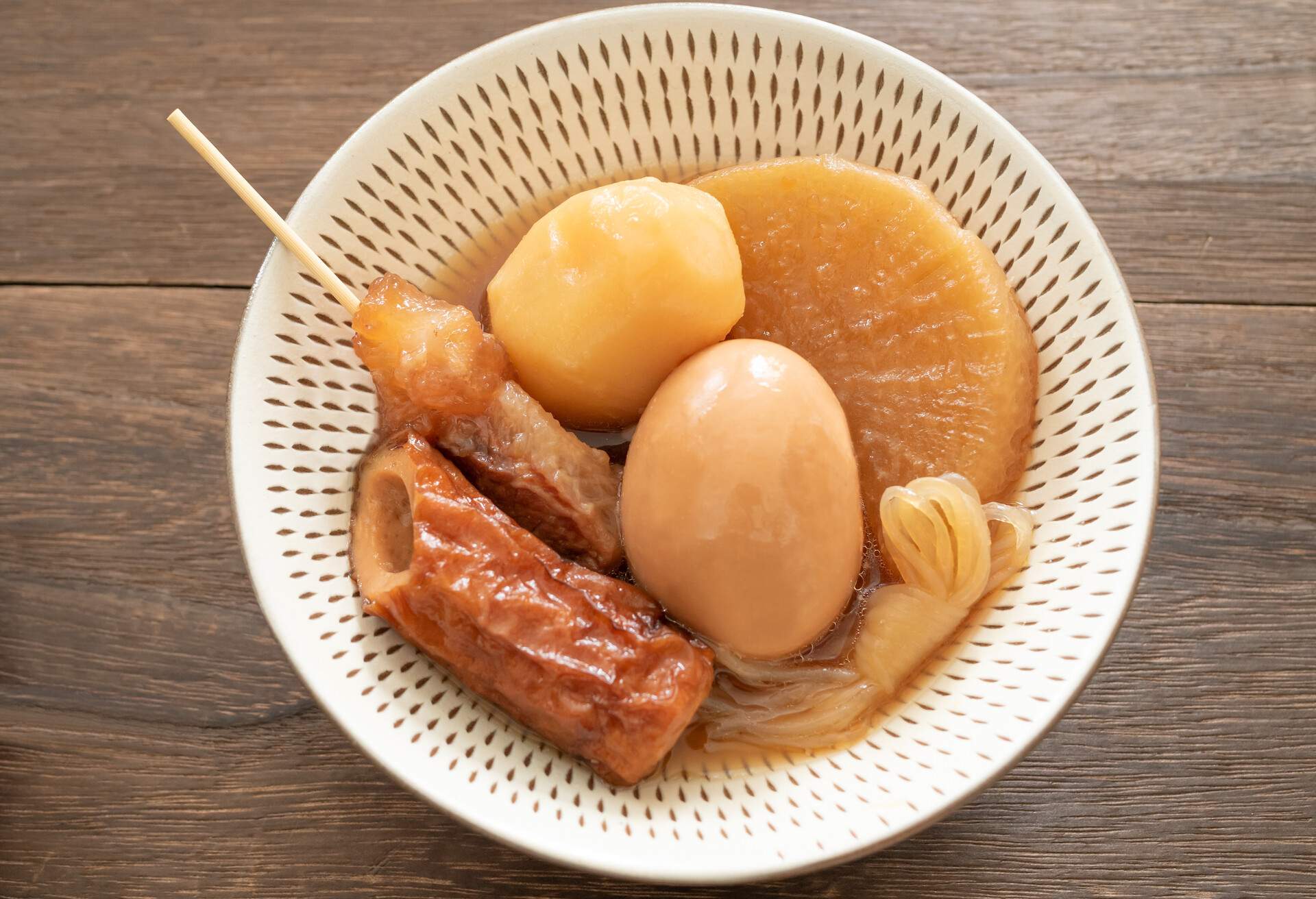
Another classic one-pot meal for the cold Japanese winters is oden. A hot-pot dish, or locally referred to as a nabemono, it is similar to sukiyaki. Using a variety of vegetables and proteins, like fish cakes and boiled eggs, this meal is stewed in a light broth and seasoned with soy sauce and dashi.
Often served in a large pot from the center of the table, it’s the ideal sharing dish if you’re traveling with your family or in a large group. A good way to enjoy this meal is to pick out your favorite pieces and eat them with karashi mustard as well as other condiments. Not only a winter warmer during the cold months, the simmering pot also acts as a heater for the table to keep you extra warm.
Nikujaga
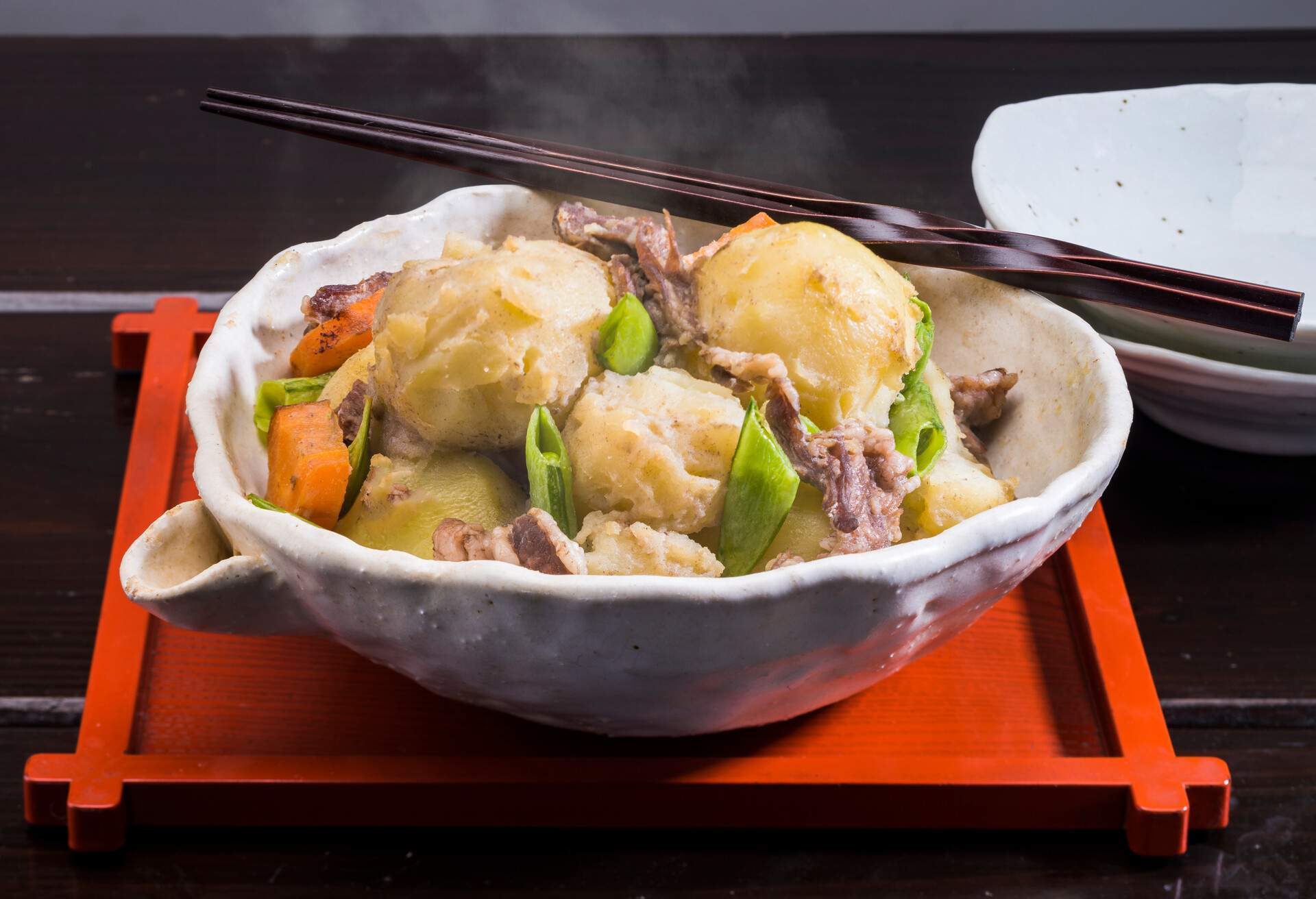
If you’re looking for a classic food in Japan that can be found in most restaurants, look no further than nikujaga. This tasty dish consists of meats, potatoes and a variety of vegetables. Topped off with soy sauce, mirin, sake and sugar, this stew belongs to the range of dishes called nimono, which refers to simmered things.
One of the most authentic ways you can enjoy this dish is at a Japanese guesthouse, as it’s a popular cuisine for families to cook. This also gives you another experience during your travels to Japan, as you’ll get a better idea of how the locals live. This dish was created in the 19th century by the Imperial Japanese Navy to keep hungry soldiers well-fed, so expect to be full to the brim once you’re finished.
Shabu-shabu
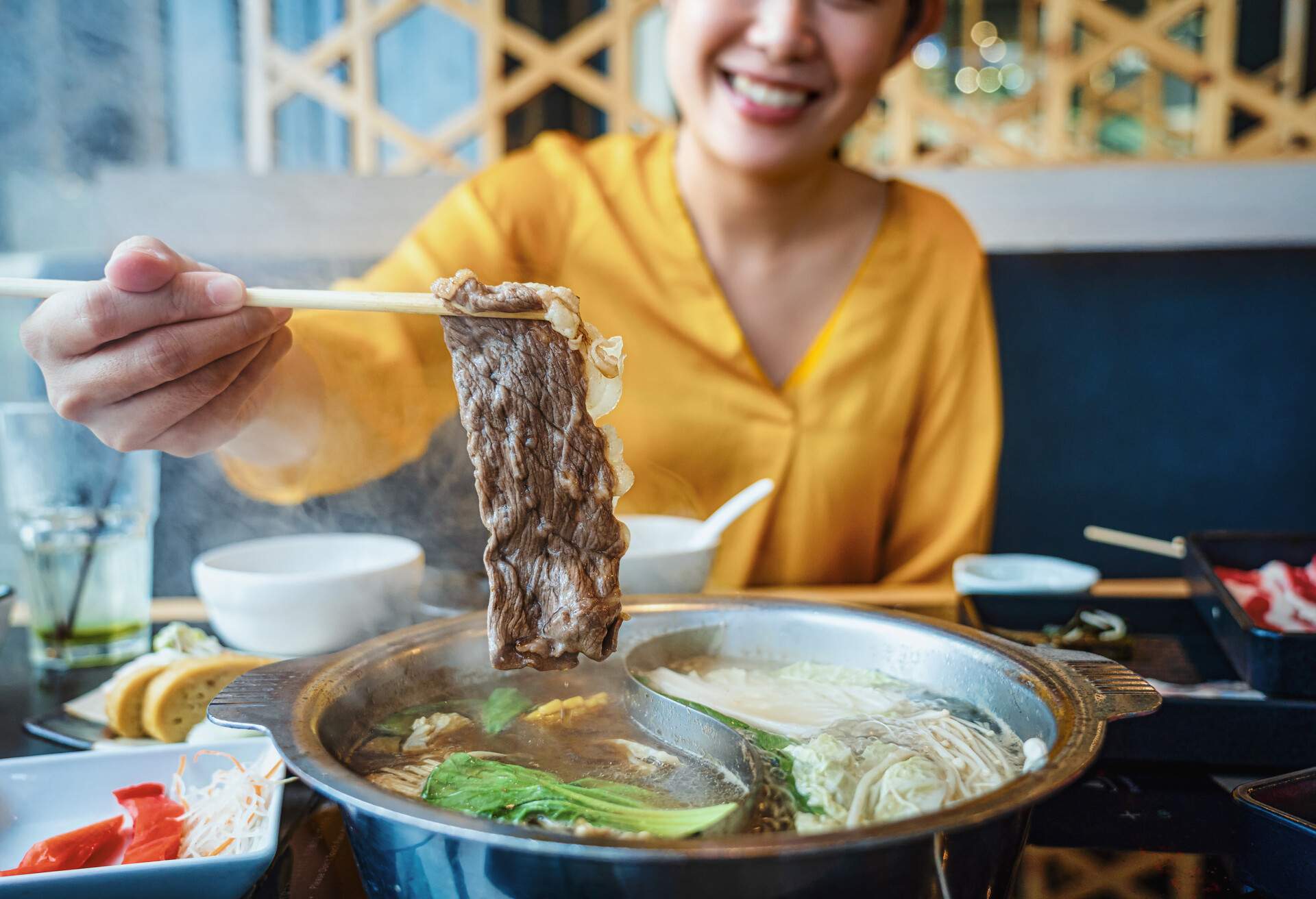
The word shabu-shabu is the Japanese onomatopoeia for the sound of thin slices of meat being swished around in broth. The dish itself is made by boiling a range of ingredients, like vegetables and tofu, in a seasoned broth. You then dip thin slices of meat into it (similar to a fondue) and swish them around until cooked. After this, you can dip your meat into a sauce and enjoy eating it along with other ingredients.
Food in Japan: Classic dishes
There is a range of classic dishes for which Japan is well known. With a selection of meals that cater for all food preferences, there’s something for all.
Donburi
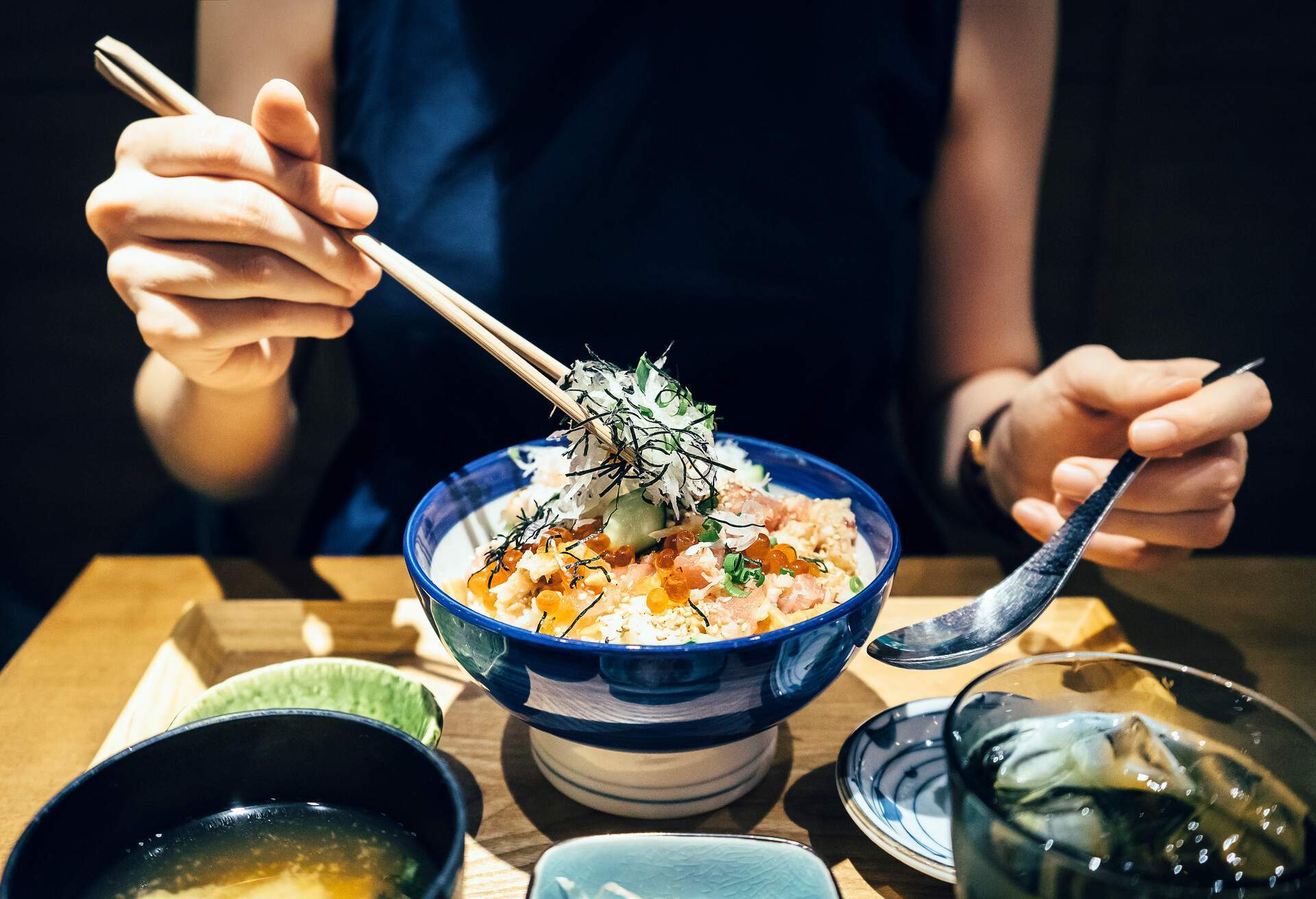
This food in Japan could also go into the rice category, but as it’s a classic meal, we’ve put it with these other delicious meals. Almost as popular as ramen (which says something about how often it’s eaten), this dish is a common choice for busy Japanese workers in the cities. It’s made from a variety of fried meats, fish and vegetables and served over steamed rice in a large bowl.
With the earliest mention of this dish appearing all the way back in the Muromachi period (1336-1573), you’ll be able to enjoy a cuisine that has stood the test of time. It’s also ideal for tourists who want an easy introduction to Japanese food, thanks to its basic ingredients. You’ll also be able to enjoy donburi as a quick pit stop during your day, so you can get back to sightseeing as quickly as possible.
Tempura
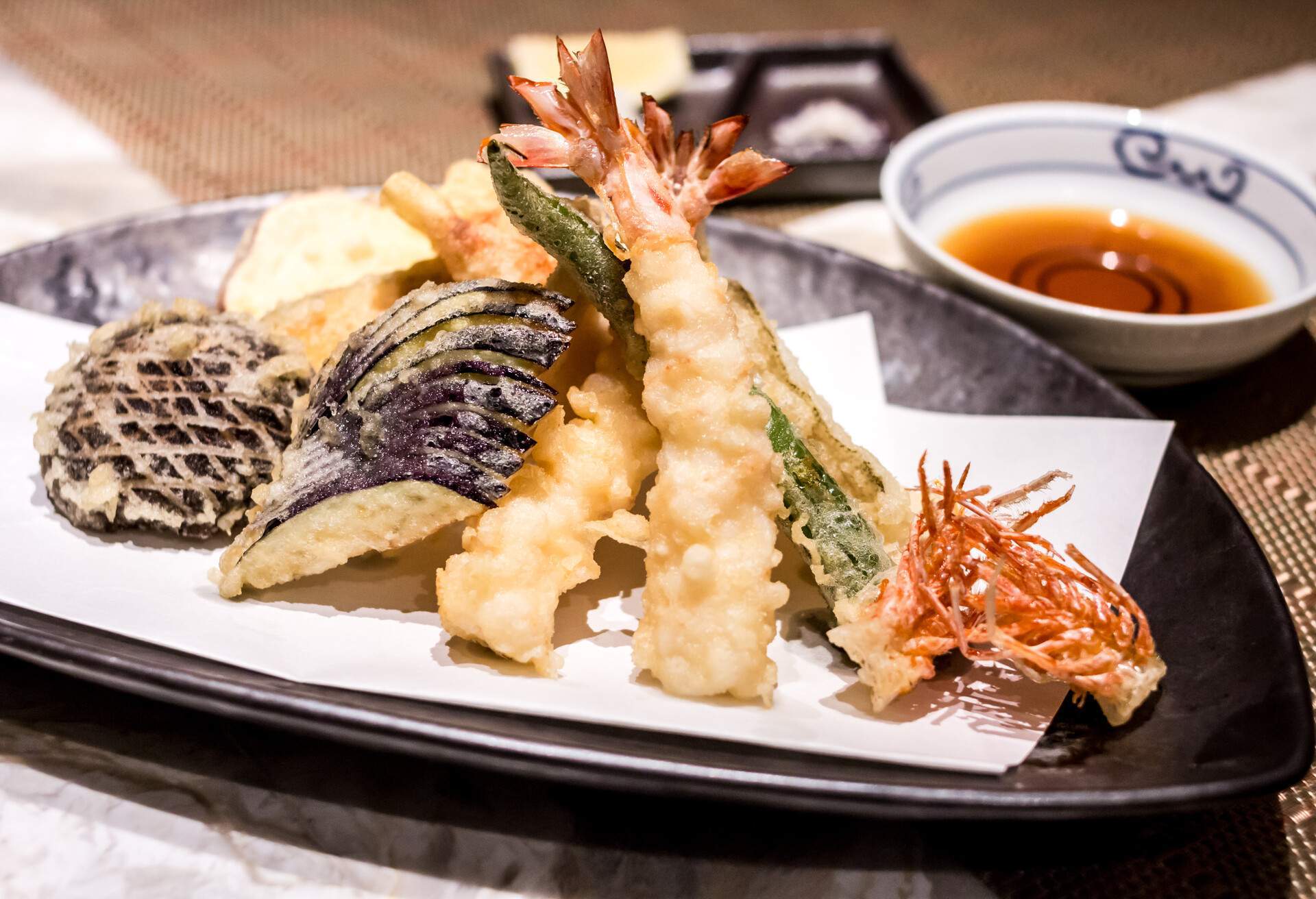
Another famous food in Japan is tempura, which is well-known throughout the world. Tempura is a range of crispy fried foods, and is the perfect meal for anyone who wants to play it safe with their meal choice in Japan. From fish to meat to vegetables, chefs fry the ingredients in a tempura batter until they are golden and crunchy. This dish is delicious either on its own or accompanied by rice bowls or noodle soup.
Unsurprisingly, this cuisine was actually introduced to Japan during the 1600s when Portuguese Catholic missionaries were in the country. Fast forward several centuries and it’s still a favorite among the locals.
Kaiseki
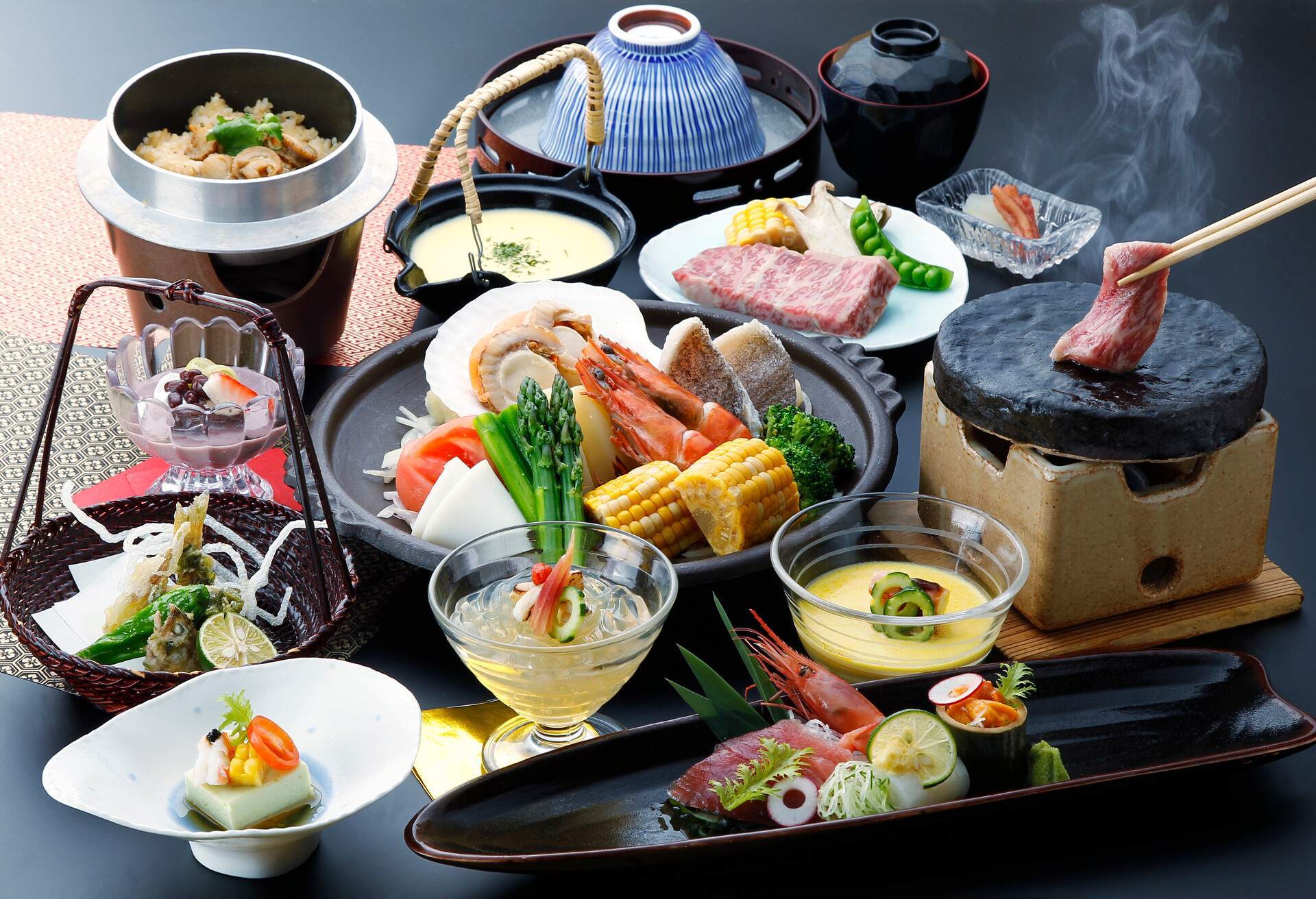
One of the most iconic foods in Japan is kaiseki. To this day, the home of kaiseki remains Kyoto, so if you want an authentic experience, this is the place to go. This meal consists of a selection of small courses that are meticulously arranged into what is easily mistaken as art. Fresh seasonal ingredients are used to create the dish, meaning it changes depending on the time of year you visit.
The variety of dishes tends to demonstrate a range of different cooking techniques, so you can appreciate a variety of natural flavors. One of the best types of restaurants to find this great meal is a ryokan (a traditional Japanese inn).
Okonomiyaki
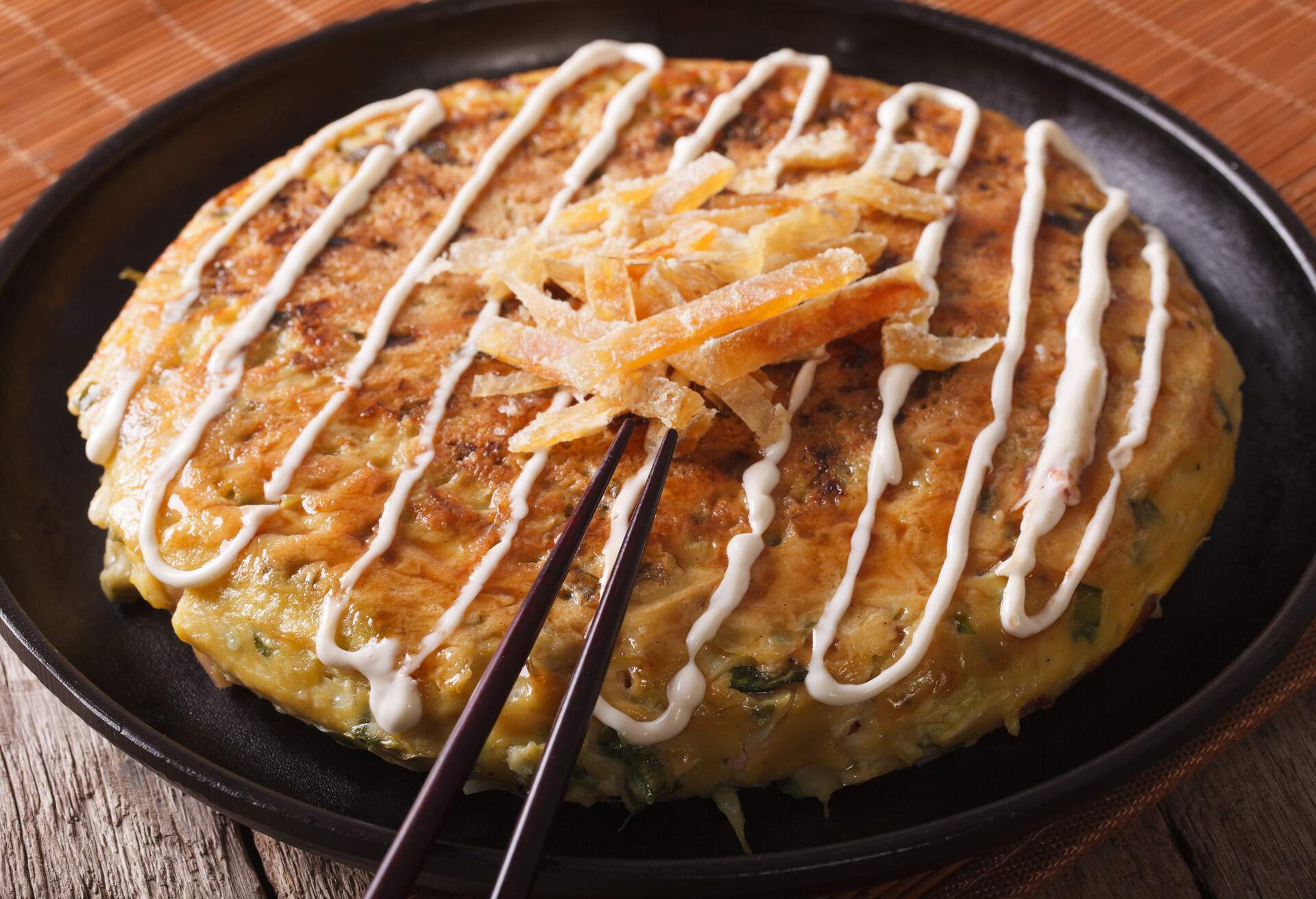
When you’re looking for Japanese comfort food, look no further than okonomiyaki. A savory pancake that is filled with a selection of foods, such as cabbage or pork, it goes against the typically refined image of Japanese cuisine. Topped off with fish flakes, seaweed, sauces and mayonnaise, it’s the perfect guilty-pleasure meal.
One of the best things about this meal is that most restaurants allow you to make it yourself, with there being a grill in the middle of the table so you can cook up a storm. While the origins of this meal date back prior to the Hiroshima bombing, this meal became extremely popular in 1945, when food was hard to come by in the country. Two of the best cities to try this cuisine are Osaka and Hiroshima.
Tonkatsu
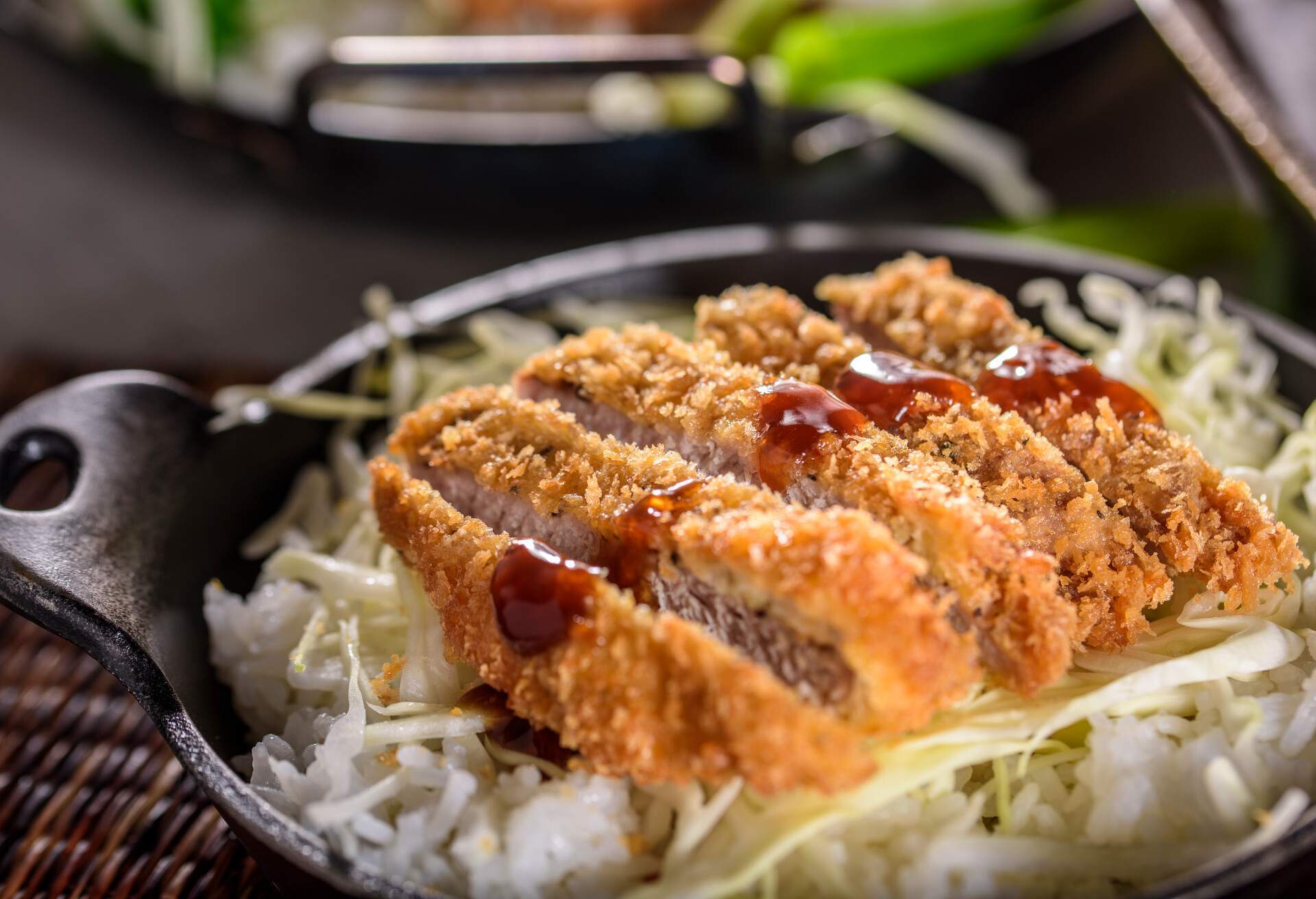
Tonkatsu is also another food in Japan that is well worth a try. Dating back to the late 19th century when Japan became more open to Western influences, this meal has become more and more popular. Don’t be fooled by the European influence though, as this version of the meal is very Japanese.
This dish is a breaded and deep-fried pork cutlet, which is cooked to be tender and mouth-watering. Often served with a side of miso soup and shredded cabbage, it’s a tasty way to introduce yourself to Japanese cuisine.
Yakitori
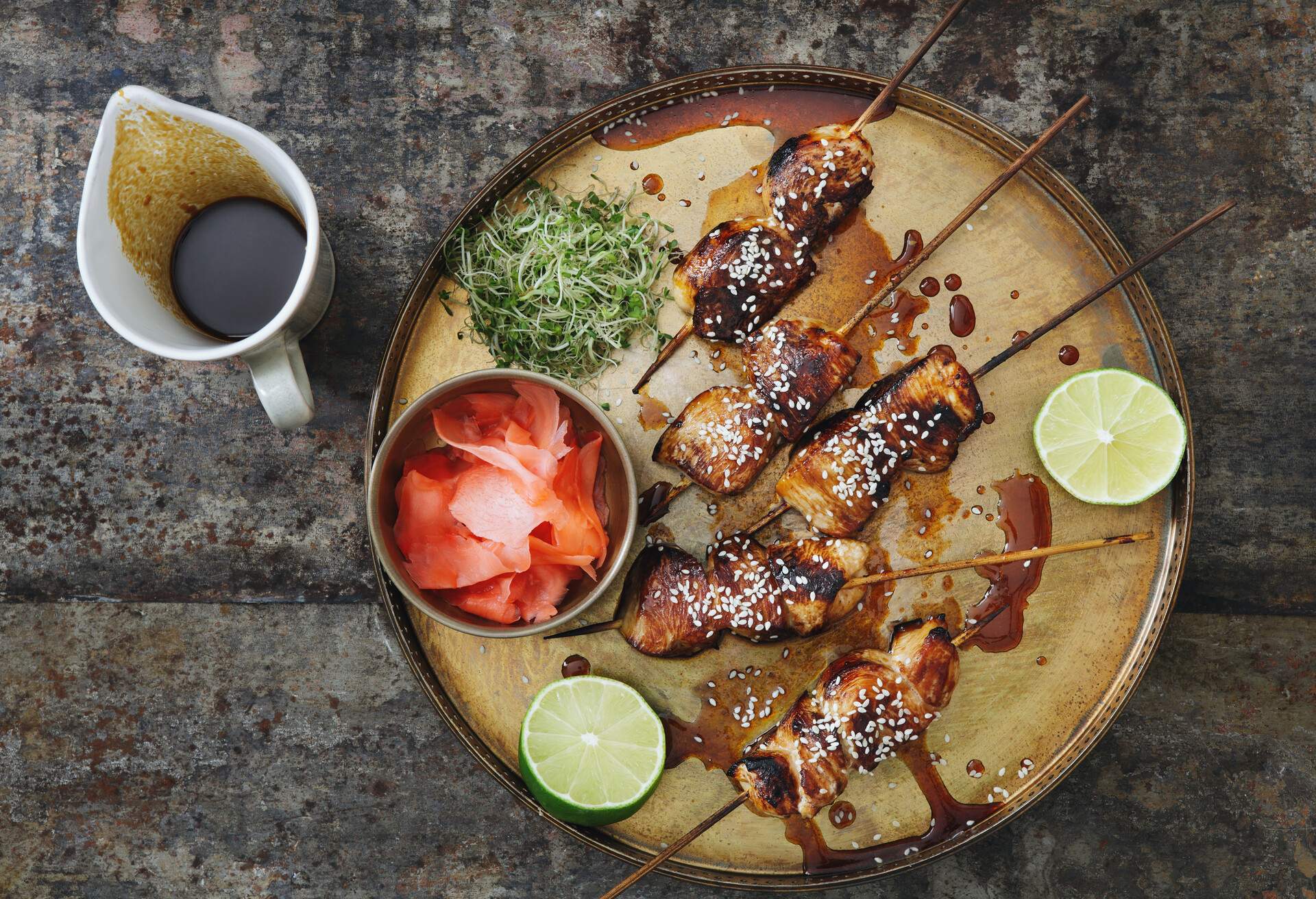
A popular food in Japan with workers is yakitori, which is skewers of char-coaled chicken. Often served with a beer, it’s somewhat of an evening ritual for many citizens of Japan. You can choose from pretty much all parts of the chicken too, being seasoned to perfection and served with a side of sauce and batter. Due to its basic ingredients, this is also the ideal meal for tourists to try if you want to dip your toes into the delights of Japanese cuisine.
Natto
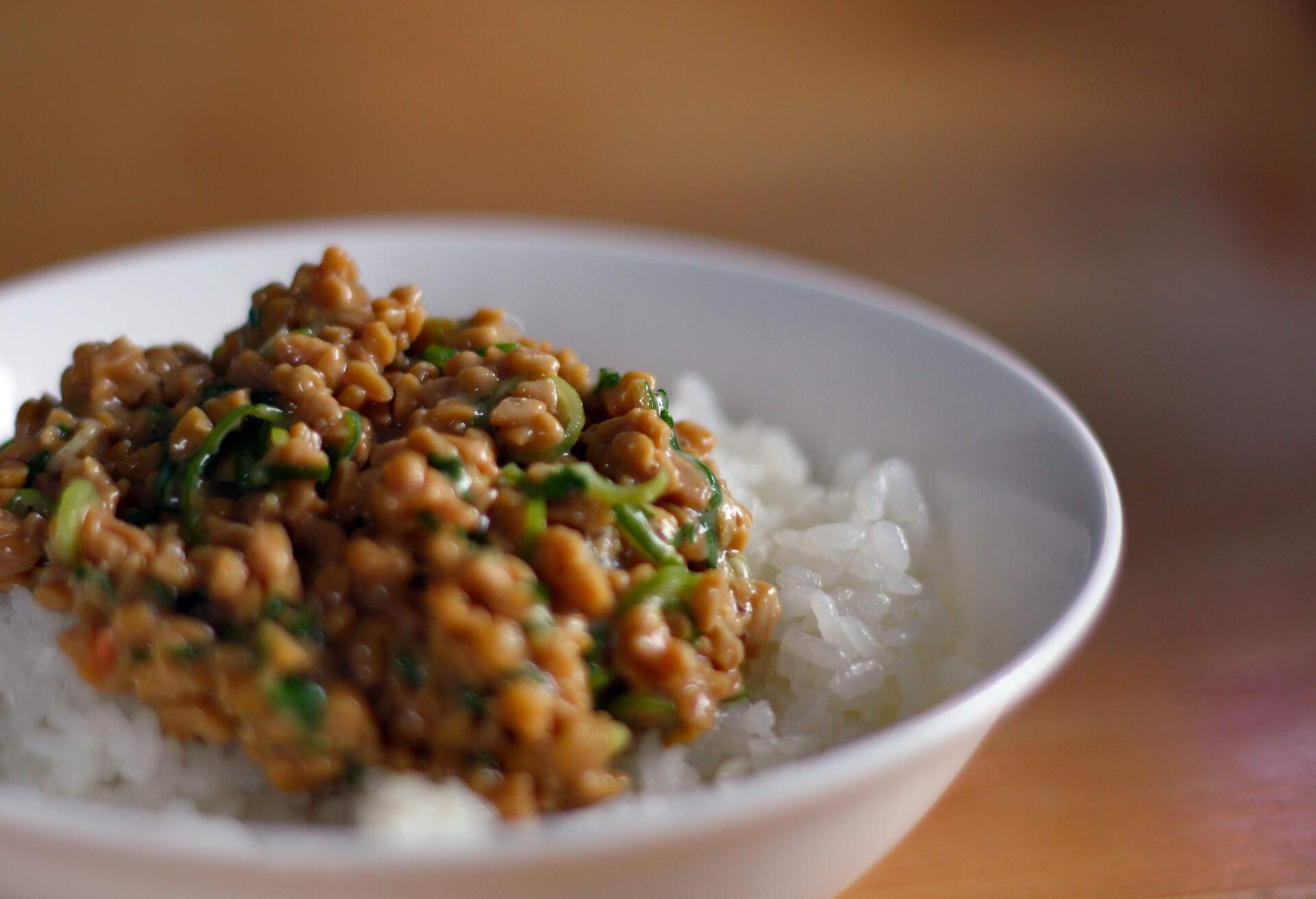
Often considered a divisive snack in Japan, natto is either loved or loathed. This traditional Japanese food is created by fermenting soybeans in a certain bacteria. As you can imagine, there is quite a strong smell to this delicacy, akin to moldy cheese. Add to that a sticky and slimy texture, it may not sound like your ideal dish.
However, the full-bodied taste and salty, savory flavor are enough to make millions love the dish. It’s definitely worth trying, as it also offers great nutritional value. Decide for yourself whether this is the snack of choice for you.
Tamagoyaki
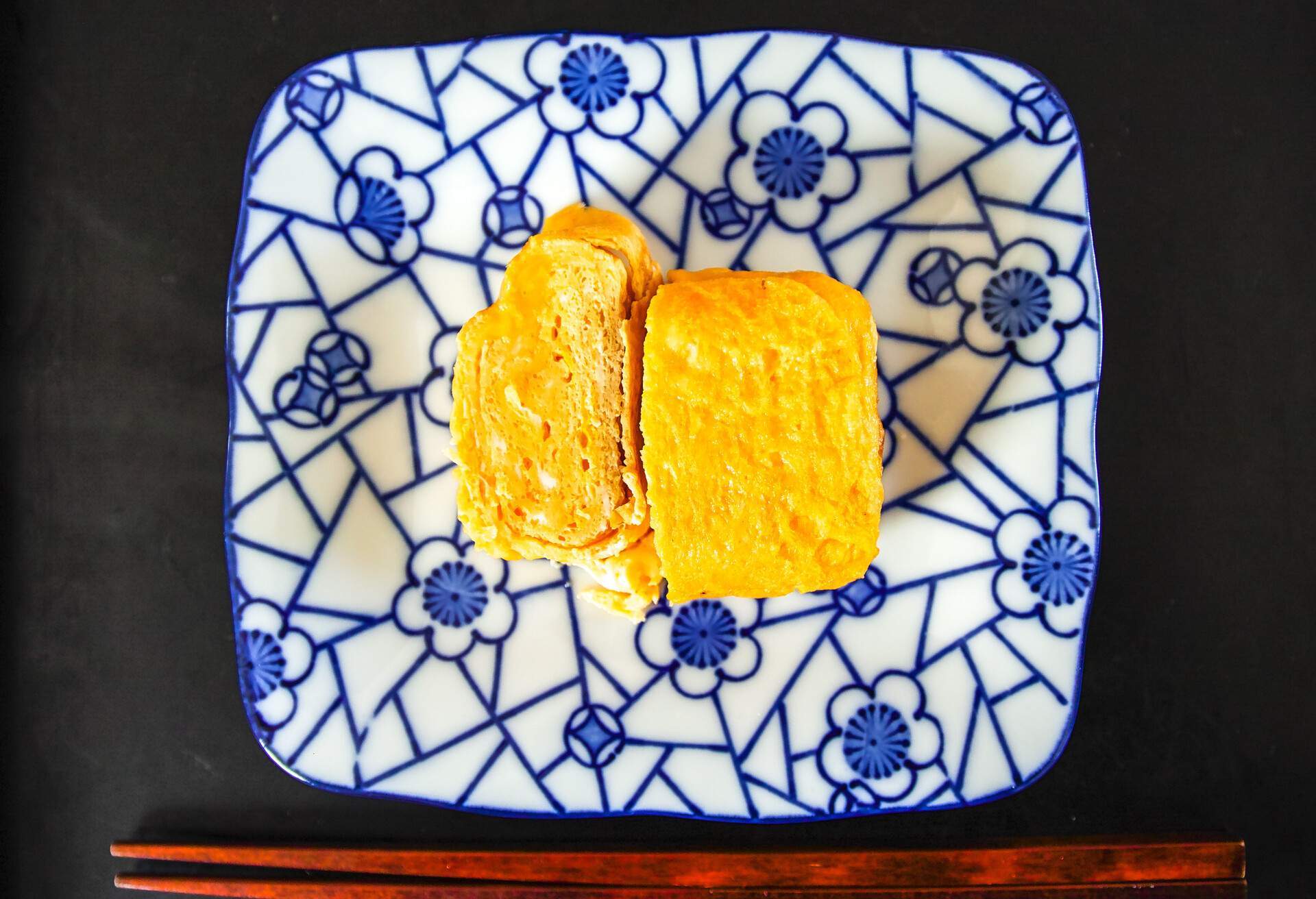
This versatile dish can be consumed alongside every meal of the day, making it a popular choice among locals and tourists. The word tamagoyaki translates to ‘cooked egg’ and is essentially several layers of eggs seasoned with soy sauce. The final appearance of this dish often looks like a rolled-up crepe. You’ll find this meal served in most sushi bars as the final course, as it has a slight sweetness to it that makes it dessert worthy.
Gyoza
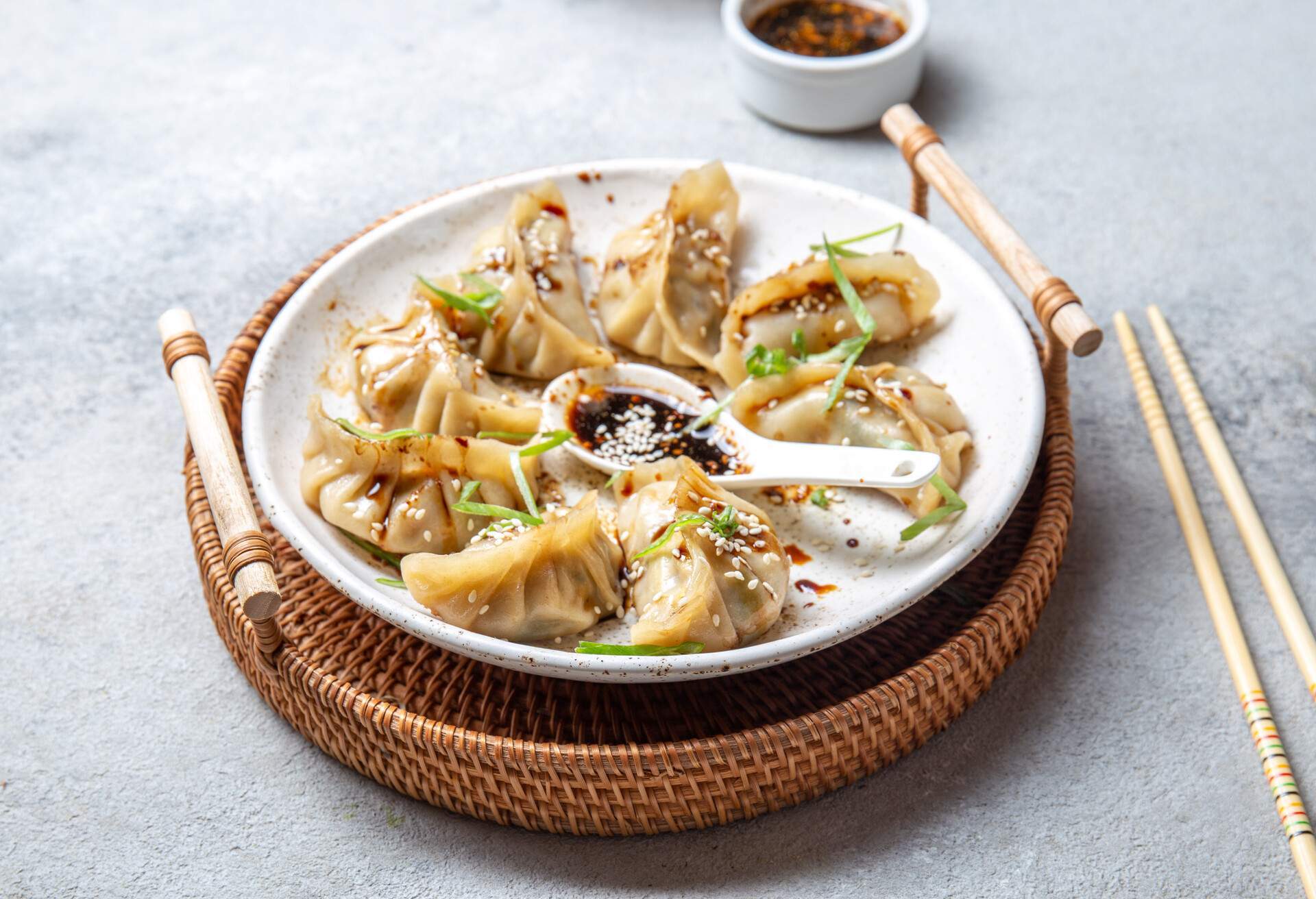
Last in my list of classic dishes from Japan is gyoza, moon-shaped dumplings. This savory meal was first created in the 17th century, but it didn’t become really popular until the 1900s, when gyoza restaurants started popping up across the cities. Filled with a selection of ingredients, like pork mince, onion, cabbage and mushrooms, it’s then wrapped in a gyoza wrapper, sealed around the edges with pleats and then steamed or fried.
Food in Japan: Noodle and rice dishes
Known for its rice and noodle dishes, you won’t have to travel far in Japan to get one of these famous meals. Check out my favorites below.
Soba
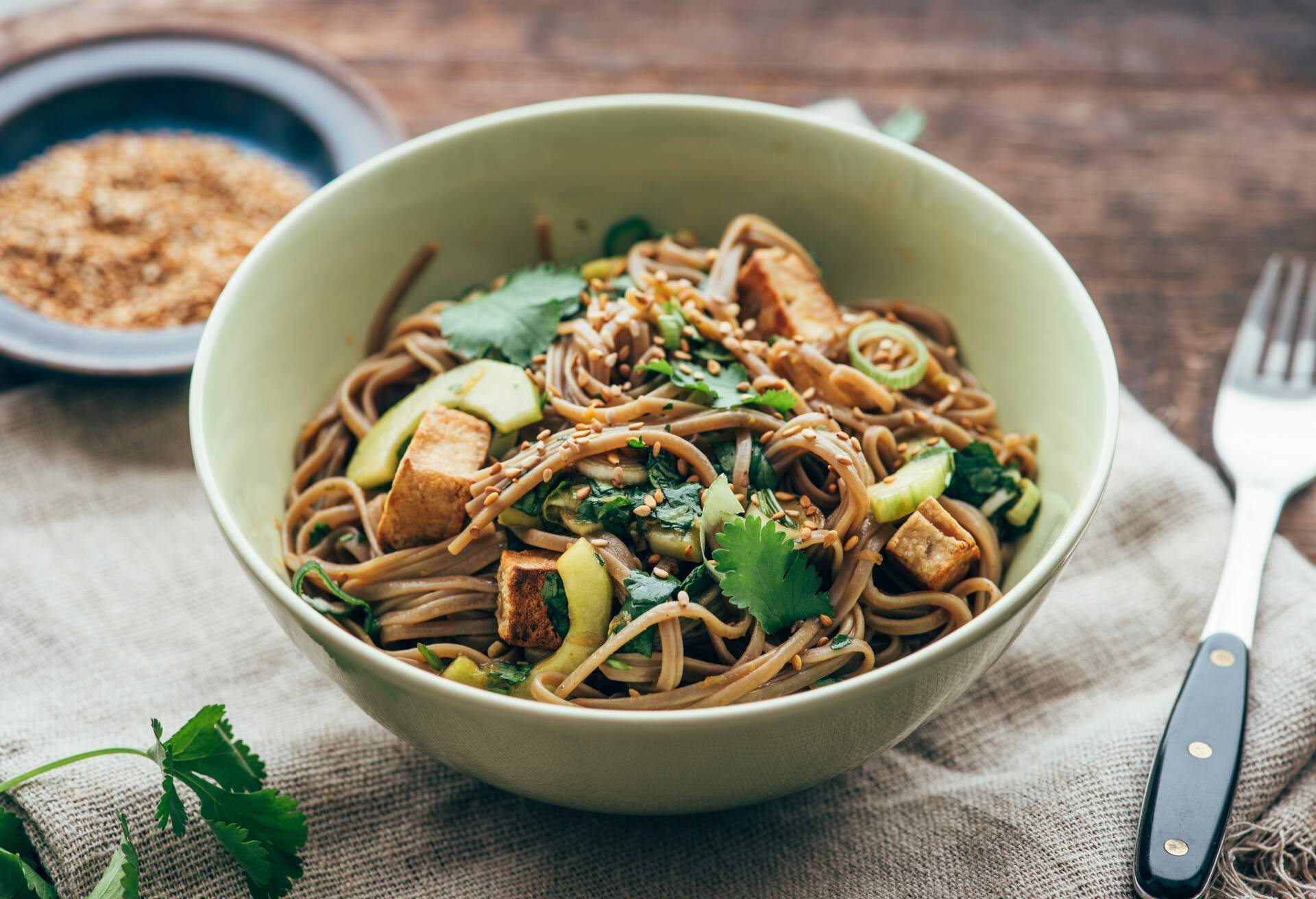
One of my favorite noodle dishes is soba, which translates to ‘buckwheat’. It’s one of the most popular types of noodles eaten throughout the country and is made from, you guessed it, buckwheat flour. This flour often gives a slightly earthy and nutty flavor to the dish. One of the main benefits is that buckwheat is naturally gluten-free, so it’s great for anyone with gluten intolerance.
You can enjoy soba with a range of ingredients too, making it a very versatile meal. From being served in hot soups or as a side dish alongside various types of meat and vegetables, it’s something everyone can enjoy. As ancient meals go, this is one which dates back as far as 300 BCE, so you can enjoy a bit of history with every bite.
Curry rice
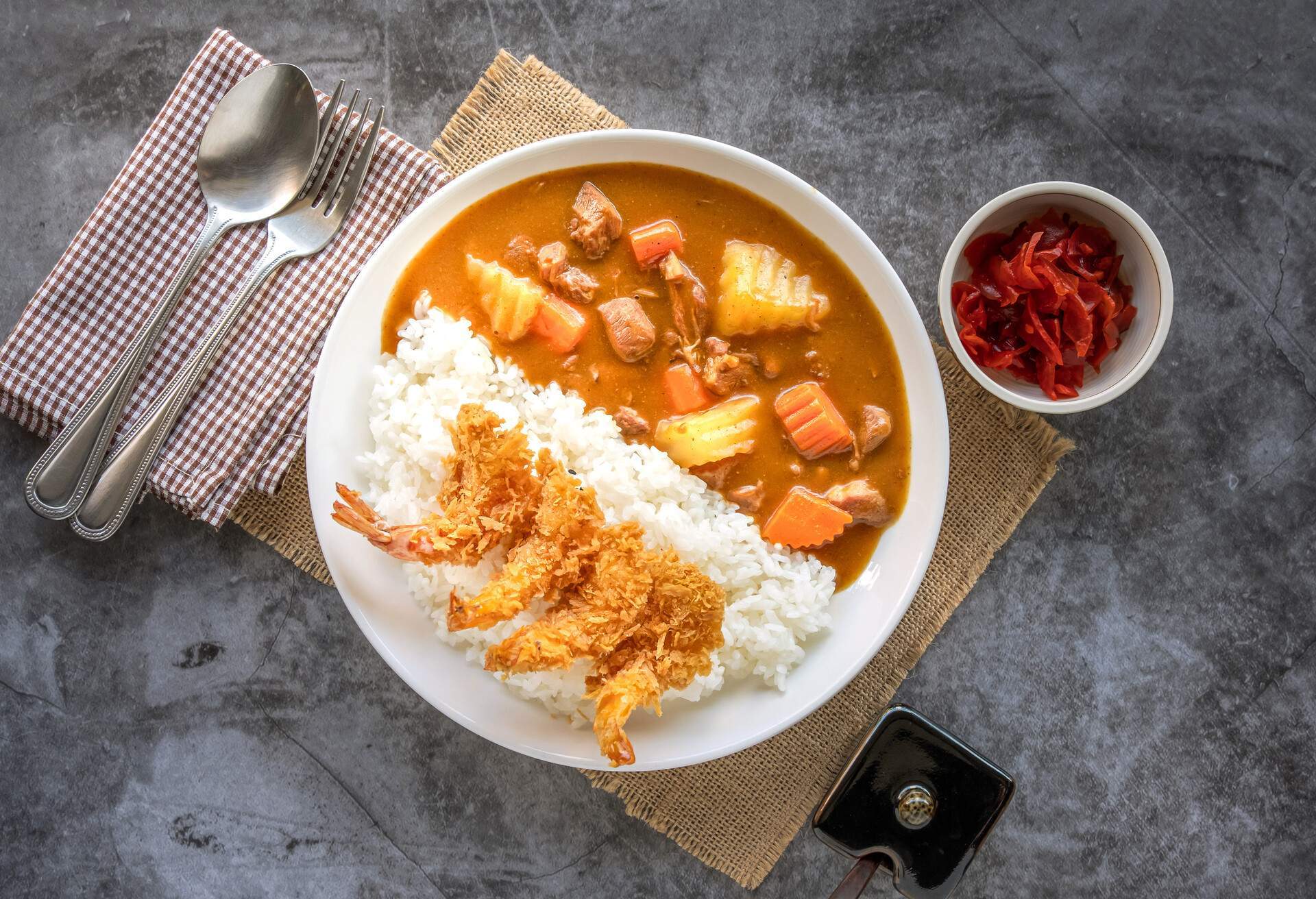
For anyone who wants to start their Japanese food journey with something a little more familiar, curry rice is the meal to have. Known locally as kare or kare raisu, this dish was introduced by the British during the Meiji era. This curry differs from Indian curries because it is slightly sweeter and thicker. It often resembles a stew and is served with rice.
One of the best places to try this meal is at a guesthouse or, if you’re lucky enough to be invited for dinner, at a local’s house. This way, you can enjoy the preparation and culture of Japanese dinner times too, which is a great way to experience the country.
Ramen
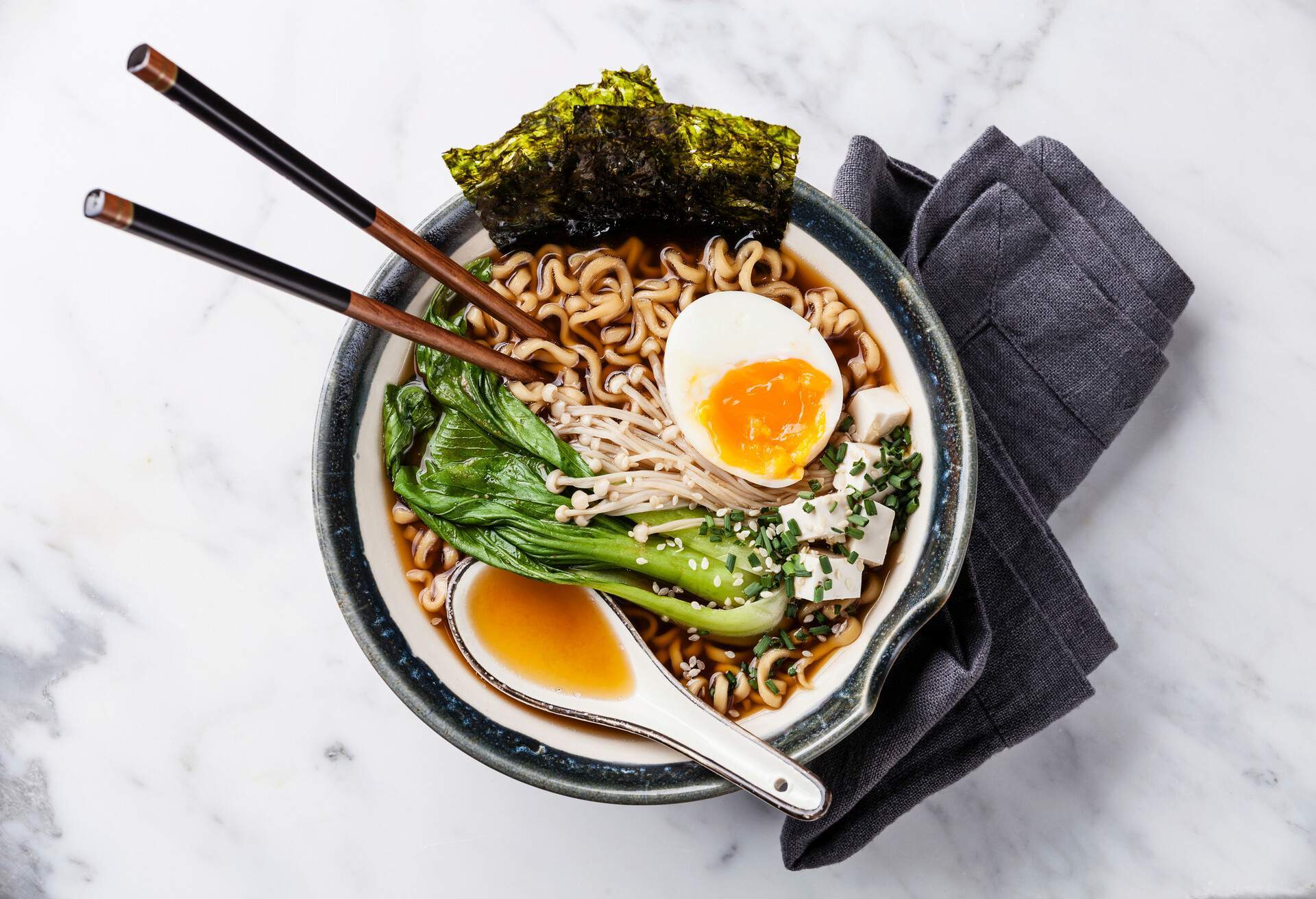
Known across the world, ramen is a popular dish that consists of egg noodles and a salty broth. This dish was first created in China in the 18th century and then introduced to Japan during the late 19th century. Since then, locals have made the dish their own, with there being four types of ramen to pick from. Tonkotsu (pork bone) is one of the most popular, whilst you can also get miso, soy sauce and salt styles too.
One of the best places to try out this cuisine is Fukuoka, which is a city on the northern shore of Kyushu Island. This city is well known for its rich tonkotsu ramen. Alternatively, head to Hokkaido, the northernmost island in Japan, which is famous for its pungent miso ramen.
Yakisoba
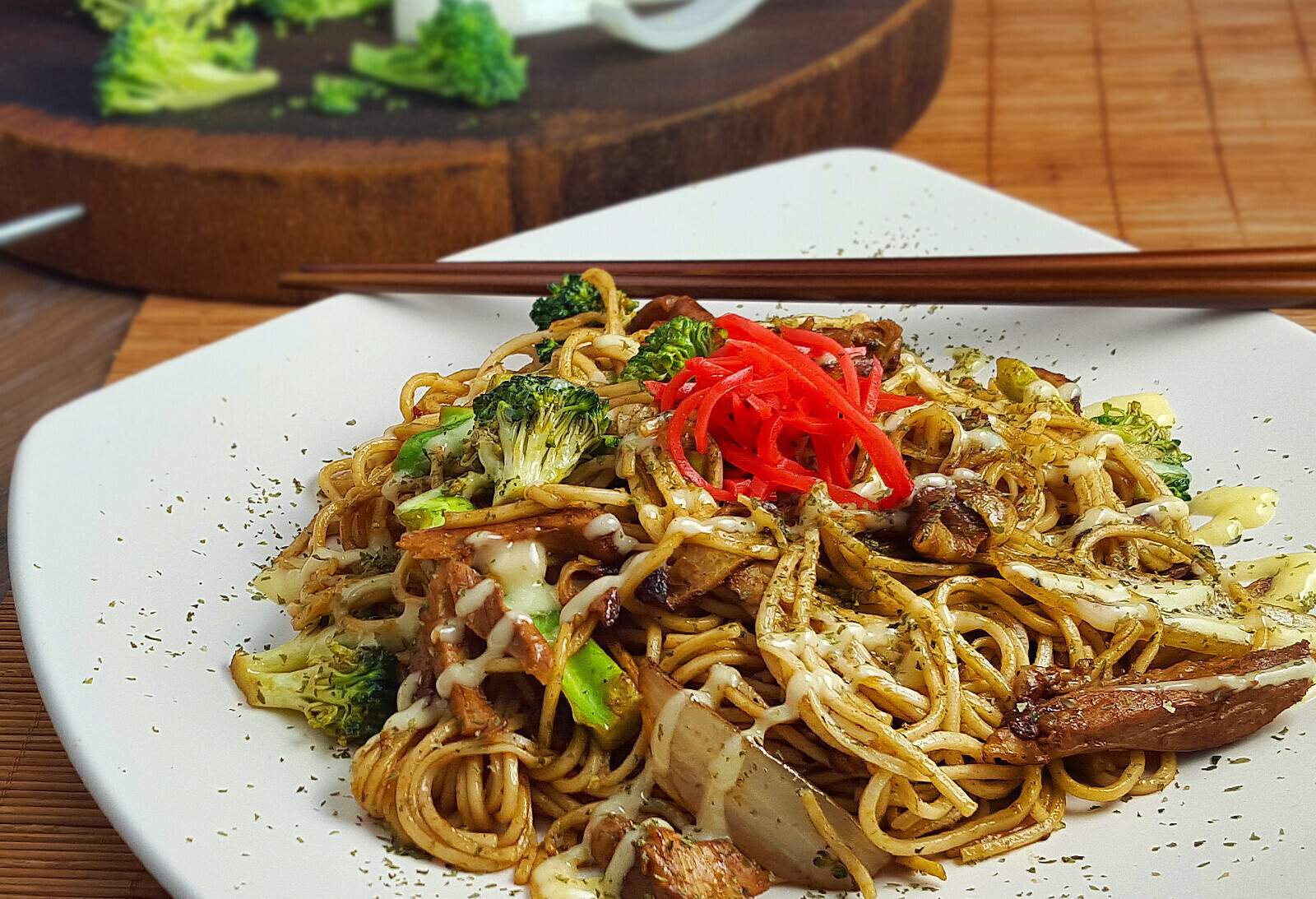
Finishing off the list of top rice and noodle dishes in Japan is yakisoba. During the summer season, you’ll find yakisoba stands throughout cities and at festivals, making it one of the most popular dishes to eat. Using fried noodles and a combination of ingredients like pork, cabbage and carrot, this cuisine is a taste sensation that is only enhanced by the barbecue sauce topping.
While the word soba from earlier in my list means buckwheat, it’s important to know that yakisoba does not use buckwheat. This means that gluten is present in these types of noodles.
Food in Japan: Sides and desserts
Finish off your meal with a side or dessert, so that you get the full experience. From soups to sweets, you’ll find a great range of foods to pick from.
Miso soup
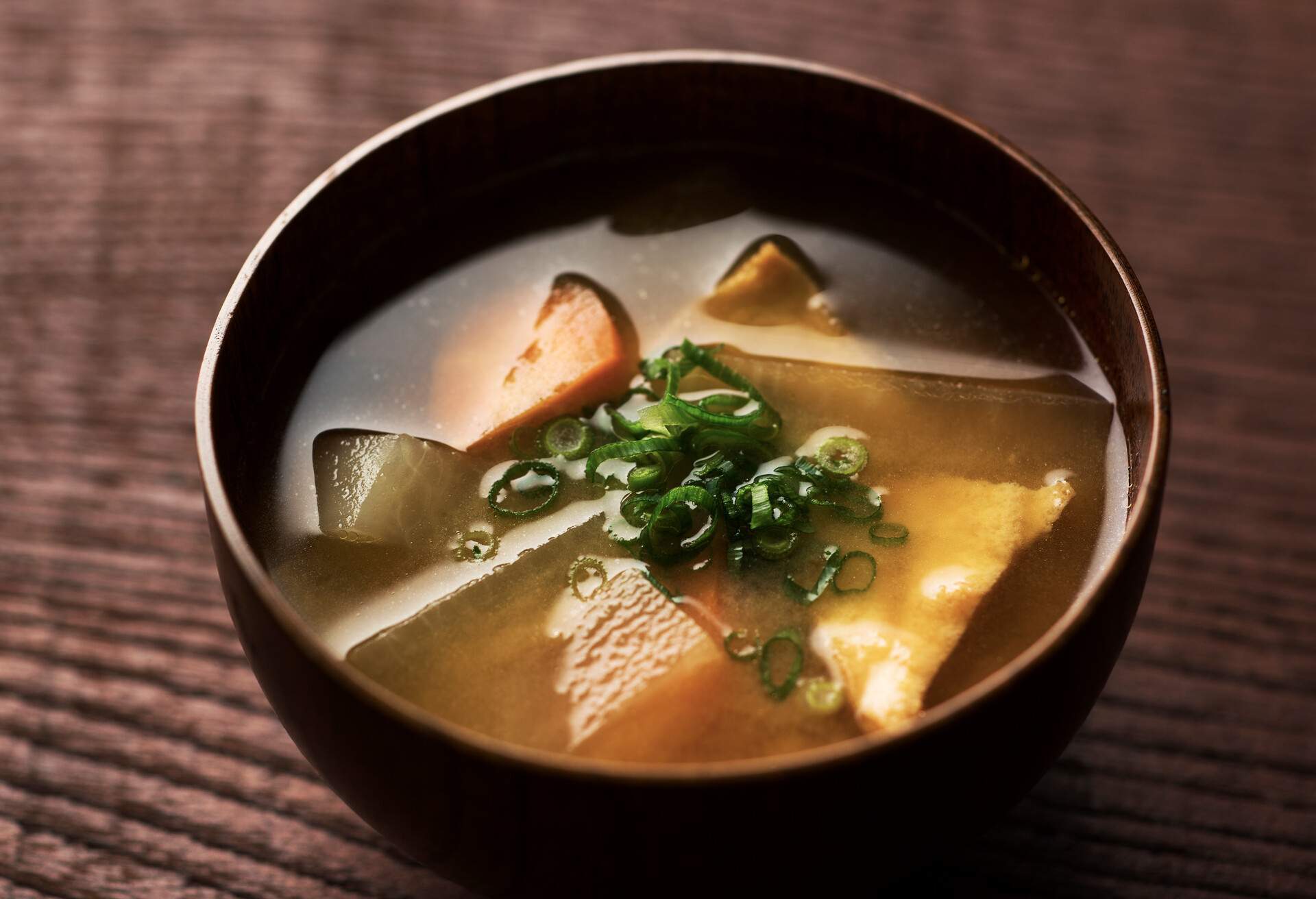
Miso soup is a food of Japan that is recognized across the globe. One of the most consumed meals in the country, it’s made from a combination of miso paste and dashi broth. Topped with tofu, onion and seaweed, this classic dish is a must-try during your travels around the country.
It’s normally served as a side or starter with traditional breakfasts, lunches and dinners. It’s thought that the complex flavors of the soup help to enhance the taste of your main dish too, which is an added bonus.
Onigiri
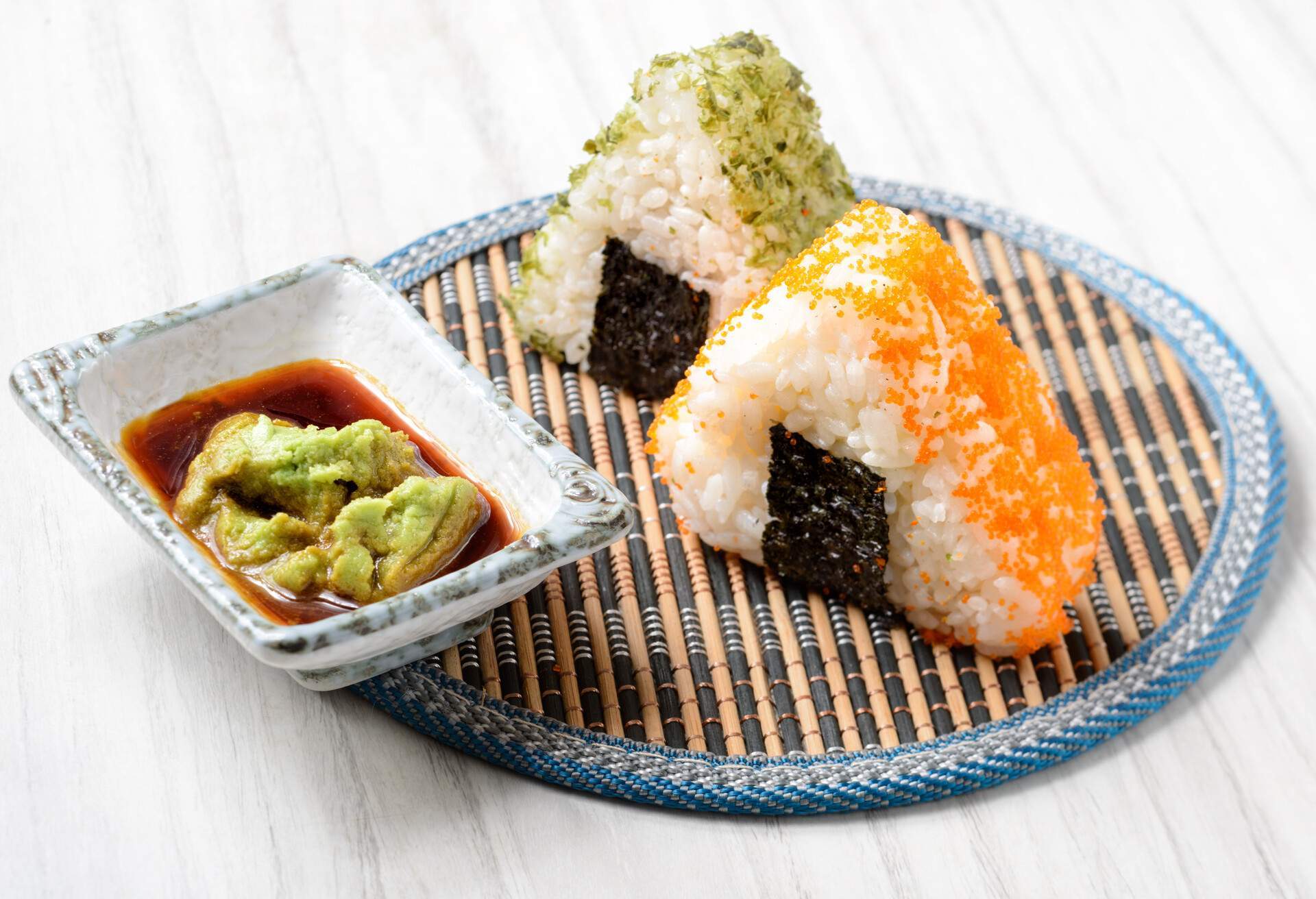
One of the benefits of onigiri is that it’s a portable cuisine which can be taken with you and eaten whenever and wherever you please. A rice ball which also goes by the name of omusubi and nigirimeshi, they are often molded into cylinders or triangles and wrapped in nori seaweed.
This type of meal dates back hundreds of years. One of the most popular places to try it when you’re on holiday in Japan is at a convenience store, which sell them for about $1 a piece. Some of the most common fillings in onigiri are pickled plums, tuna mayonnaise, teriyaki chicken and seasoned seaweed.
Wagashi
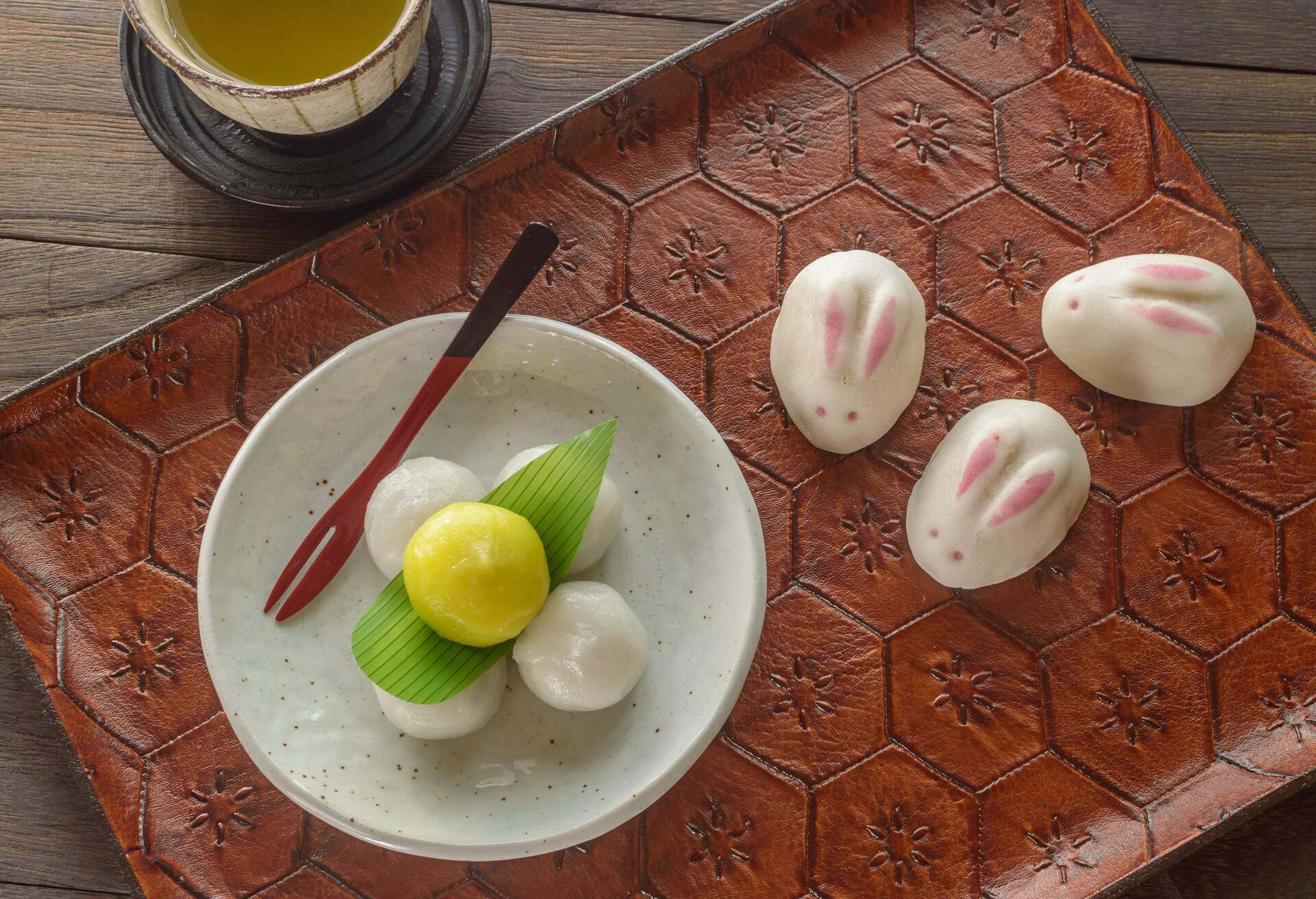
Finish off your meal with a traditional Japanese sweet called wagashi. Created during the Edo period, they’re a treat that’s influenced by a range of Japanese ingredients and flavors. One of the most popular types of this treat is dango, which is sweet mochi balls with syrup. If you’re looking for a guaranteed family favorite on your trip to Japan, look no further.
Chawanmushi
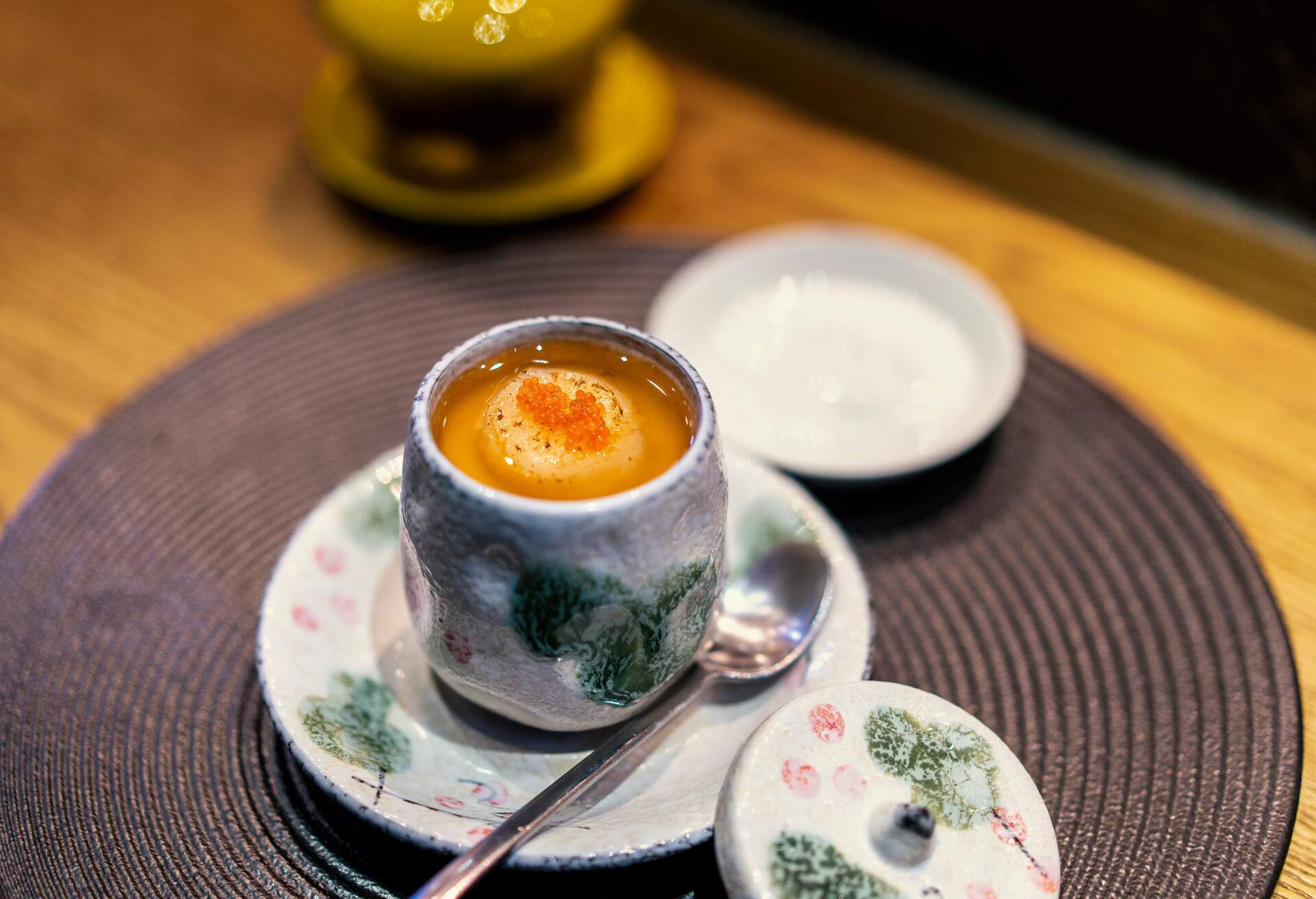
Last but certainly not least on my list of foods in Japan is chawanmushi, which is a steamed savory egg custard. Consisting of meats, vegetables, nuts and fish, this dish is the perfect addition to many main meals in Japan. With its history dating back to over 300 years ago, the Japanese have had plenty of time to perfect their way of cooking this hidden gem of a meal.
If you’re a food lover but you’re not visiting Japan, then check out some of these other food-inspired blogs from around the world. Discover some of the best hidden-gem restaurants worth traveling for or learn about 3 Ways to See Seattle. Or, if you’re staying in Europe, get inspired by the best restaurants in Rome.
